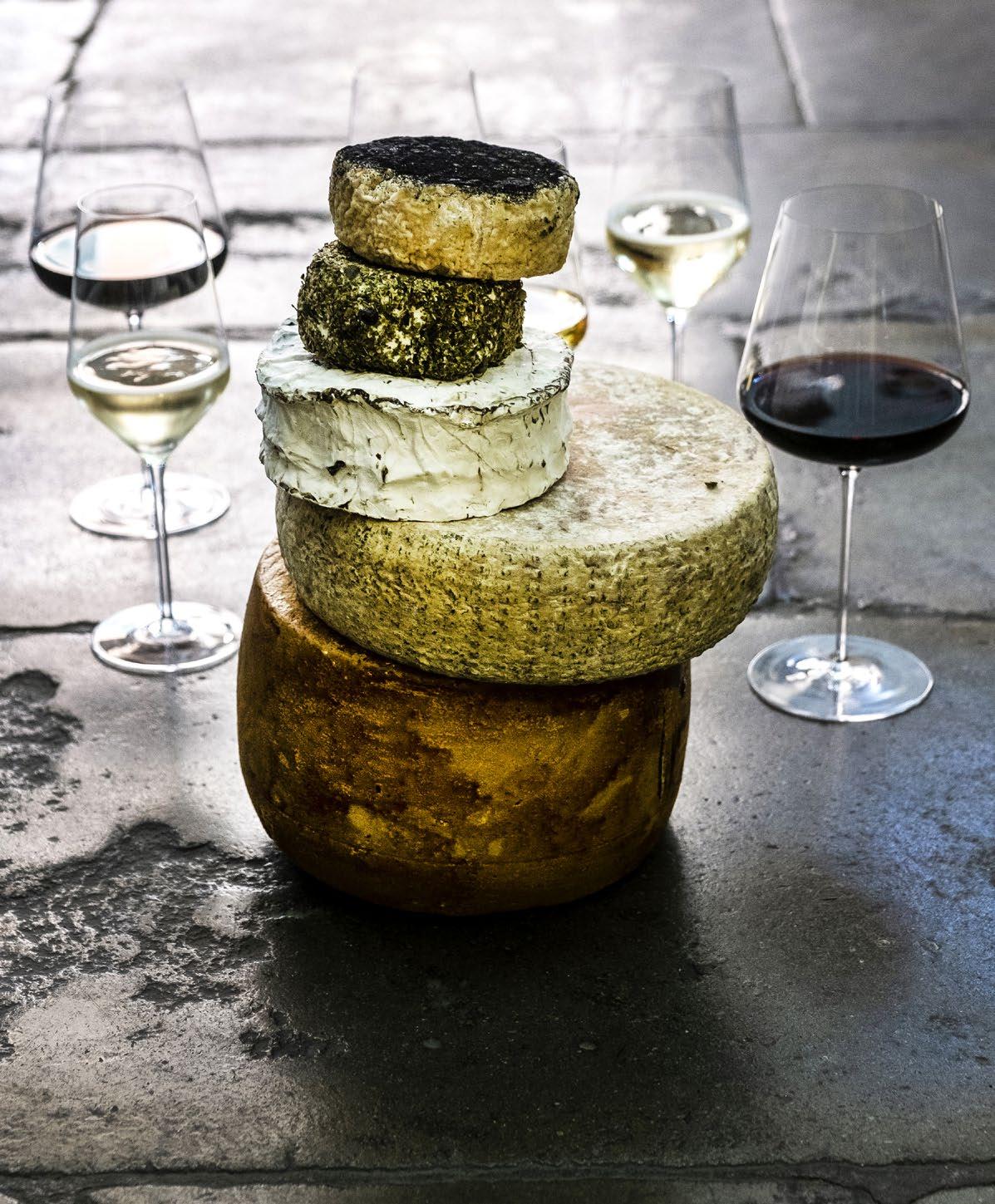
WINE TRAVEL FOOD year 24 - number 156 - september-october 2022 - gamberorosso.it OLTREPÒ PAVESE VALPOLICELLA. VINEYARDS AND OLIVE GROVES CHEF: ENRICO MARMO WINE & CHEESE What's the perfect pairing?
The Wine to Buy Seasonal Cocktail

Vini d’Italia 2023 is out!

Wine & Cheese: the art of pairing. Two noble protagonists of the dining table and of the history of Italy
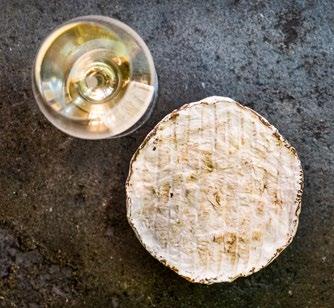

The Oltrepò Pavese, so far yet so close.
Wine country and more…
The other Valpolicella: a suggestive land of wine to be discovered while staying in vineyards and olive groves
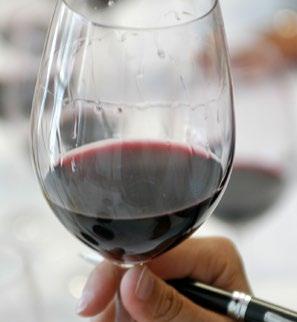

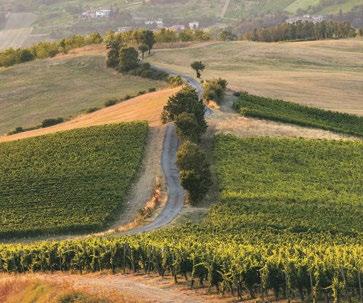
Recipes: Enrico Marmo

Editorial News
5 6 12 14 18 24 S OM MA R I O WINE TRAVEL FOOD year 24 number 156 september-october 2022 gamberorosso.it OLTREPÒ PAVESE VALPOLICELLA. VINEYARDS AND OLIVE GROVES CHEF: ENRICO MARMO WINE & CHEESE What's the perfect pairing?
44 62 76 76 88 44 24 62 18



The dynamism of Italian cuisine

The unwavering togetherness of food and wine is at the roots of the history of Gam bero Rosso. Our insights are daily and disseminated through the uniqueness of our extensive multimedia that is certainly known to our readers and users (Sky chan nels 133 and 415, online platforms and our great Guides). In this issue we analyse the pairing between the excellences of Italy’s dairy production and our fantastic wines, in both cases only France is at our levels on a world scale.
As we go to press, we are preparing for the presentation of the historic Gambero guides: Vini d’Italia, the deepest publication in the world, is now being released in its 36th edition. The most recent, Top Italian Food, is in its 7th edition complete with an extensive review of the variety of national cheeses, even the less well-known ones. Italian excellence, to continue the growth of the entire supply chain, needs to deepen knowledge of the gastronomic culture and the “competition’s” offer – both out of curiosity, because even beyond our borders there are products and typical specialities that deserve to be known, and to continue to establish ourselves abroad. In its history, Italian cuisine has the characteristic of being constantly contemporary, and it is probably the only world cuisine that can be defined as such, because it is open. Over the centuries, in fact, it has been enriched and stratified thanks to cross-pollination, first of all from the Mediterranean and subsequently from all over the world. Products that have enriched the biodiversity of our country and that ingenuity of farmers, producers and chefs has brought into our dishes. (Some examples, kiwi? Until a few years ago it was little known, now Italy is among the first world producers. Carbonara? Perhaps originally it was truly U.S. soldiers who seasoned the pasta with powdered eggs and bacon present in their rations. Wine? Conversely, we are convinced of our primacy, even if we do not always remember other contemporary European cultures).
In this issue we take you to the origins of one of the most complex, multifaceted and exciting pair ings: the marriage of wine and cheese. We go into detail of pairings that are too often taken for granted, capable of great appeal. Then, we take you to two large wine areas, Valpolicella and Oltrepò Pavese to discover flavours that fit into truly suggestive contexts. For over 35 years we have been committed to finding – and discovering – stories, territories, products, wise transformations of ingredients of a dynamic sector, that’s always in constant movement and never static. It is in our DNA to have our eyes open to the future of this immense cultural and economic heritage with the privilege of being able to tell it.
Paolo Cuccia
5GAMBERO ROSSO SEPTEMBER-OCTOBER 2022
Top 100 Forbes Women. There is room for food & beverage

Birth of the first Ministry of Coffee in the world

The first Coffee Ministry ever promoted in the world was born in Papua New Guinea. The goal, in the words of Prime Minister James Marape , will be “coffee, coffee and more coffee.” Not too much imagination, nor clarity on the duties of the newborn body, to tell the truth. But a name, yes, that of Joe Kuli, the first person ever to hold the position of cof fee minister, who economically speak ing is the second agricultural product in the country, immediately after palm oil, which has also won its own ministry in this circumstance. The grains of black gold grown in Papua New Guinea in fact guarantee 27% of the total export of the local primary sector, cubing 6% of the national GDP, in a country, how ever, where most of the families live on subsistence agriculture. The interna tional community awaits the first moves of the ministry, hoping for fairer and more severe rules on the environmen tal and social fronts.
Making the list is Debora Massari , daughter of Maestro Iginio. The top 100 of successful Italian women selected by Forbes that annu ally draws up an awaited list dedicated to female leadership. Among the qualities that distinguish the protagonists involved are dedication to work and ingenuity shown in innovating the professional sector of reference. These gifts are found in the Lombard pastry-chef, now co-founder and board member of the Iginio Massari Alta Pasticceria group. Working in the field for over twenty years, Debora Massari has developed a passion for pastry art alongside her father, revealing great managerial and marketing skills over time. Thus came the inclusion in the top 100, which this year also sees the presence of other women in food & beverage: oenologist Lucia Migliaccio; the general manag er of Confagricoltura Annamaria Barrile; the CEO of Illycaffè Cristina Scocchia; Giulia Putin of Serenissima Restauration and the founders of 50/60 Gin Rurale Angela Aliani and Fabia D’Ecclesiis.
6GAMBERO ROSSO LE BREVI SEPTEMBER-OCTOBER 2022
La pizza conquista Chef’s Table: Franco Pepe e Gabriele Bonci su Netflix

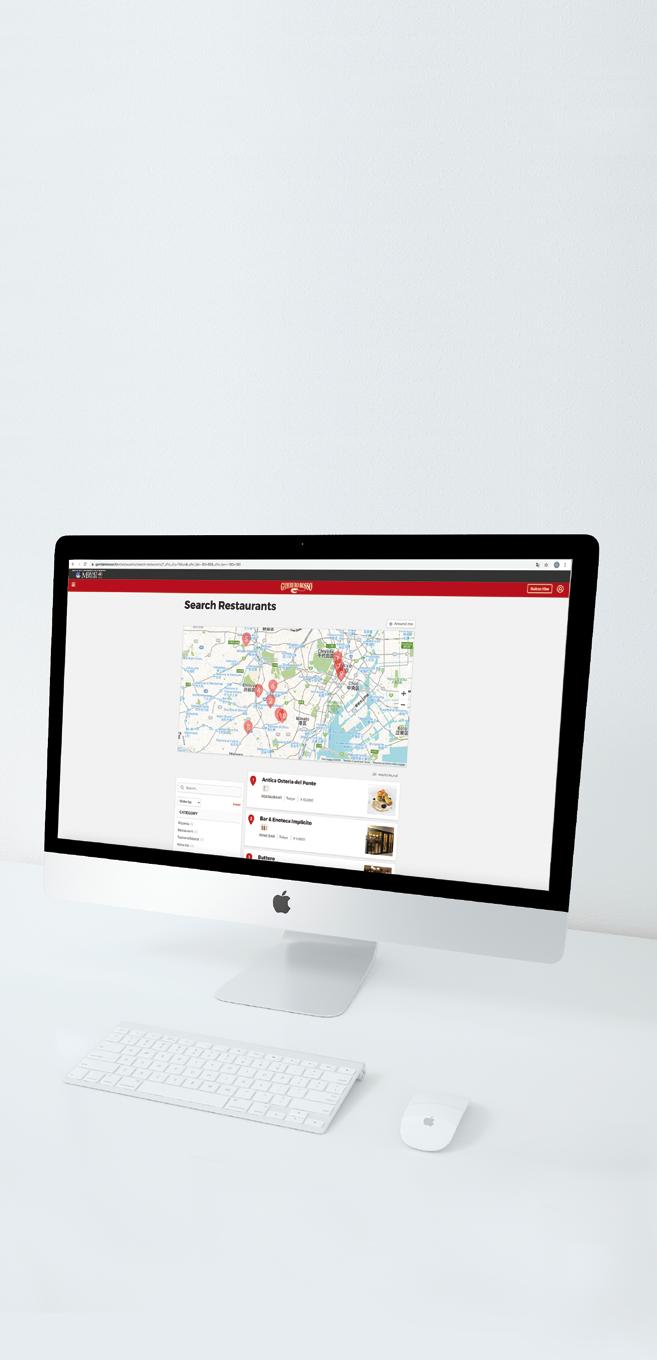
Per l’Italia ci sono il campione della pizza in teglia ro mana Gabriele Bonci e il maestro casertano di Caiaz zo Franco Pepe. Con loro anche esperti artigiani del la pizza d a Giappone, Minnesota e Oregon. La formula non cambia, ed è quella che ha regalato a Chef’s Table la nomea di serie gastronomica più incensata degli ultimi anni, sin dalla prima serie – per l’epoca rivoluzionaria nel comunicare l’alta cucina e i suoi protagonisti in video –prodotta da Netflix. Nel tempo il gioiellino ideato da Da vid Gelb ha vissuto alterne vicende, andando incontro a stagioni più riuscite (la scelta delle personalità da seguire fa molto) ed esperimenti non altrettanto entusiasmanti. Sono nate nel frattempo le serie tematiche: la pasticce ria, l’alta scuola francese, il bbq che, forse per la prima volta in modo evidente nella storia della produzione, ha permesse di guardare anche fuori dagli esiti più gourmet e patinati della ristorazione. Ora tocca alla pizza, con il ciclo di sei puntate disponibile sulla piattaforma di strea ming online dallo scorso 7 settembre. Gli episodi che più inorgogliscono l’Italia sono dedicati, per l’appunto a due personalità emblematiche quanto visionarie per la storia recente della pizza made in Italy. Ma la specialità alimen tare che più ci rappresenta nel mondo, ricordiamolo, non è solo appannaggio italiano (fermo restando il ricono scimento Unesco per l’Arte del pizzaiolo napoletano). Dunque spazio anche alle storie di Chris Bianco (Phoenix, Arizona, USA), Ann Kim (Minneapolis, Minnesota, USA), Yoshihiro Imai (Kyoto, Giappone) e Sarah Minnick (Port land, Oregon, USA).

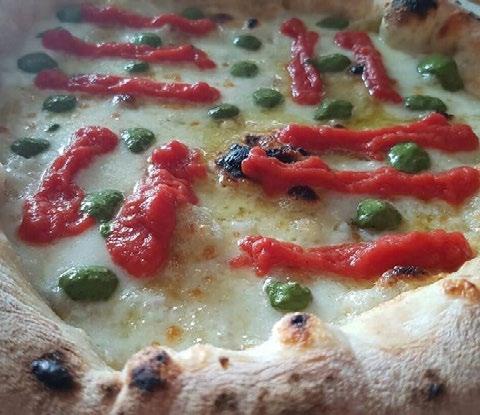
SEPTEMBER-OCTOBER 2022 LE BREVI
TOP ITALIAN RESTAURANTS www.gamberorossointernational.com/restaurants/ TOP ITALIAN RESTAURANTS sponsor b GamberoRossoInternational x GamberoRossoInternational
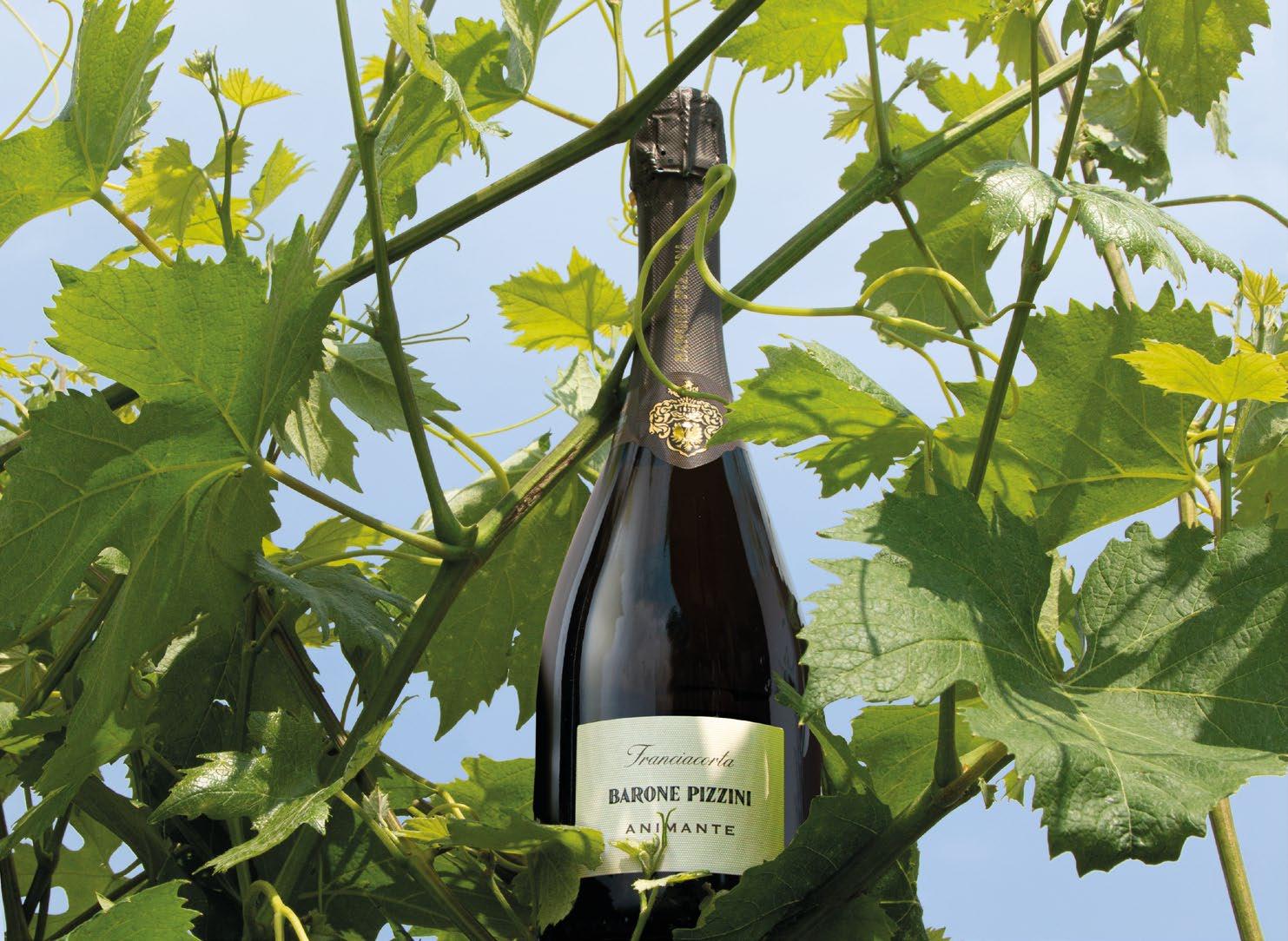
Neh Experience. Food and wine tourism startup in Piemonte

Food and wine tourism in Italy is one of the main de velopment assets to revive local economies also in the inland areas of the country. The goal for the next few years will be to develop tourist circuits that can boost services and activities that respect the specificity of each place, so as to enhance rural biodiversity and attract a heterogeneous audience of travellers. Carlo Abrate, Matteo Jaretti Sodano and Emanuele Sega, cre ators of startup Neh Experience, which has been op erating in Piedmont for some months to offer regional food and wine tours, must have reasoned with lucidity. The project earned them the moniker of ‘the Netflix for tourism,’ since the portal is able to aggregate services inspired by those offered by the main international booking platforms (homes, hotels or restaurants), de veloped internally, however, in order to make every ex perience bespoke. Users looking for unusual itineraries can thus take advantage of packages that combine ac tivities and tastings in the food and wine sector, master classes, spa treatments and stays in carefully selected hotels. The choice is made by price range, and can also include complete package tours, such as Fuga in Lan ga, one of the most appreciated experiences by foreign tourists. To cycle through the Unesco hills, discover the wines that have made the history of Italian oenology, enjoying a private tasting or admiring the view from the top of a hot air balloon.
It was 2021 when the news of the discovery of the oldest beer pub in the world (more than 5,000 years have passed since its foundation), in Egypt, bounced on the interna tional news that celebrated the exceptional nature of the discovery. The Archaeological Park of Pompeii knows something about this, an Italian pride crystallised by the terrible eruption of Vesuvius in 79 AD, which allowed most of the places used for daily life in the populous Ro man city to be preserved, including a thermopolium (a hot plate eatery of the time) including remains of food. The most recent novelty in the field of spaces intend ed for the production of food or drink in antiquity now comes from Great Britain, where archaeological excava tions conducted in East Yorkshire have unearthed what appears to be a mediaeval beer hall. A pub, in short, like those so dear to the British, who have made it a symbol of sociality and cultural identity. To justify the hypothesis, is the discovery of a large number of glasses and large ceramic jugs, probably used to mix beer for the patrons of the village and passing travellers, eager to refresh them selves before resuming their journey to the city. Bones of sheep and cattle of the time would also suggest the exis tence of a cuisine based on traditional dishes in the past, like today. Timeline? Based on the design of the glasses, scholars hypothesise this to be at least 13th century.

Archaeology: this is what a mediaeval pub was like (and what it served)
9GAMBERO ROSSO LE BREVI SEPTEMBER-OCTOBER 2022
1
La Tordera: family history and sustainability in the heart of the Valdobbiadene terroir
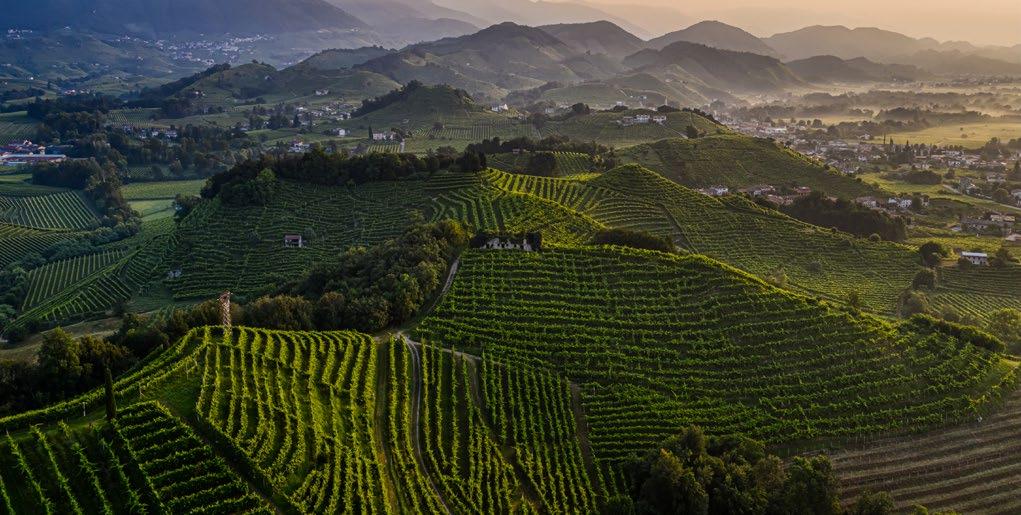

For over a century Tordera has been transforming its grapes into elegant Valdobbiadene Docg sparkling wines. Located in Vidor in the heart of the Prosecco Su periore appellation, between Venice and the Dolomites and, the Vettoretti family - made up of Renato, Gabri ella, Paolo with their parents Mirella and Pietro - has become the custodian and promoter of this territory.
«Nature is at the centre of our thinking and our ac tions - explains Gabriella Vettoretti - It is the symbol of rebirth, of the strength of life renewed. It influences our choices: from the construction of the certified Ca saClima Wine cellar, to the reduced use of sulphites in the production of Valdobbiadene, up to the recent sus tainable restyling of the image of our bottles conceived with an eye towards sustainability.»
The origin of the name La Tordera is, in fact, linked to the family’s centuries-old vineyard in Cartizze and, in particular, to the presence of a hillock called “tordera” because it is frequented by flocks of thrushes (in Ital ian, tordi). The restyling, presented a few months ago,
intends to revive this story in the bottle, embellished with a relief on the neck, with the reproduction of the stylised thrush enclosed in its nest. And the nest (which symbolises the place of origin), together with the egg (symbol of new life) are the new graphic symbols cho sen to decorate the bottles.
But there’s more. The company mission, strongly de sired by the Vettoretti family, is identified with a “Nat ural Balance” concept, that is a continuous search for sustainability, in a closed cycle from farming practic es in the vineyard to the production of all the bottles, from the choice of packaging materials to to the com pany structure.
This propensity for sustainability also guided the cel lar project, whose structure was created to use various sources of energy: water, wood, thermal and solar en ergy, synergistically and with a view to saving energy. This is why La Tordera is the first winery, and the only one in Veneto, to have obtained the CasaClima Wine certification in 2018.
10GAMBERO ROSSO GAMBERO ROSSO X LA TORDERA SEPTEMBER-OCTOBER 2O22
1. The Tittoni vineyard, which enjoys a splendid panorama and bears the name of an unforgettable figure for the Municipality of Vidor, benefactor cavalier Tittoni 2 and 3. The cellar, CasaClima Wine certified 4. The Vettoretti family
Otreval Rive Di Guia Extra Brut Valdobbiadene Docg
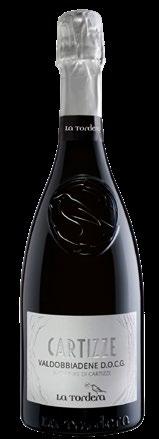

This is the winery’s zero-sugar Val dobbiadene, produced only with the best hand-picked glera and verdiso grapes. The vineyard from which it derives - OTreval in Guia di Valdobbiadene - is the highest on the property with its 300 metres above sea level The result is a dry wine, complex in aromas and rich in structure, with a fine, constant and persistent perlage. Nashi stands out on the nose, a fruit with characteristics between apple and pear; in the mouth it is intense and leaves a pleasant acidic freshness. Perfect pair with seafood dishes.

Cartizze Dry


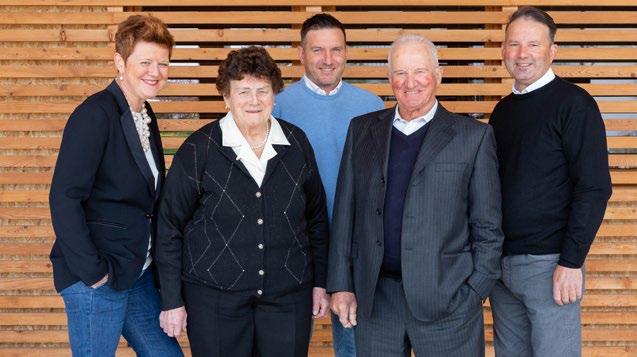


Valdobbiadene Docg
This label is born from the centu ries-old vineyard on the Cartizze hill, which Pietro personally takes tends, and has been for more than 80 years, as founder of the Vet toretti family. With a bright colour, this Cartizze expresses intense fruity and floral notes to the nose, among which a strong standout almond scent; while on the palate it recalls the sensation of ripe ap ple and pear. The perlage is fine and persistent. The per fect pairing? Shortcrust filled with almonds
La Tordera – Vidor (TV) – via Alnè Bosco, 23 – 0423985362 – latordera.it
2 3 4 11GAMBERO ROSSO GAMBERO ROSSO X LA TORDERA SEPTEMBER-OCTOBER 2O22
THE WINE TO BUY
ARGIANO Solengo 2019


Montalcino, Siena, Tuscany www.argiano.net average retail price: 60 euros
The term “historical” is absolutely reductive when describing the atmosphere in Argiano, a town in southwest Montalcino that’s constantly mentioned in the province’s oldest documents. Built in the second half of the 16th century by the noble Pecci family, the winery (together with its vineyard estates) now belongs to Brazilian entrepreneur André Esteves. The acquisition has vaulted the producer to the upper echelons of the territory, thanks to Sangiovese da Brunello that’s always distinct in its pulpy, sunny character. Solengo is the Supertuscan of Montalcino created by Giacomo Tachis. Since 1995 Solengo stands for power and boldness, pride and longevity, thanks to its unique blend of Cabernet Sauvignon, Merlot, Petit Verdot, and Sangiovese. Organic farming, low yelds and a very accurate use of new and old oaks do the rest. We strongly believe that Solengo 2019 is the best one ever produced by argiano. Complex and very elegant on the nose, the Solengo ‘19, opens up with notes of dark fruits, eucalyptus, sweet spices and Mediterranean scrub; it has a beautifully structured palate, pulpy and intense, well balanced between juicy fruit and very refined tannins. The finish is very long and persistent, with a special spicy twist. The oak (French barrique, 60% new and 40% second-use) is perfectly integrated with the structure of the wine, we noticed a remarkable sense of harmony in this wine. The 2019 vintage is shining in this bright and detailed Solengo.
12GAMBERO ROSSO NEWS SEPTEMBER-OCTOBER 2022
Terroir’s expression according to Biancavigna’s philosophy



The hills of Conegliano Valdobbiadene land of Prosecco Superiore D.O.C.G. are the protagonists of the history of Prosecco.


BiancaVigna was founded in this land in 2004 by the siblings Enrico and Elena Moschetta who, for the first time ever, made sparkling wines with grapes grown in their family vineyards that belonged to their grandfather Genesio since the beginning of 20th century.

The heroic outline of the hill of San Gallo, the historic family vineyard, has inspired BiancaVigna’s logo, a sign of a landscape always been part of the company identity.

BiancaVigna’s philosophy is to perceive and understand this land in order to highlight the different structures, minerality and characteristics of the unique vineyards in which the grapes are produced.
The soils of Conegliano Valdobbiadene have a very ancient origin. The eastern part has a morainic origin, due to the melting of the glaciers of the Dolomites, which brought











down sediments and moraine deposits; the resulting soils are deep and composed by rock and sand with a lot of clay. In the western part, instead, the soils have maintained their marine origin, deriving from the raising of sea- and lake beds. Here the soils are composed of calcareous rocks, less deep and more porous. This determines a coexistence of many different types of soils, but also a different conformation of the hills, which are rounder and sweeter in the eastern area, with a limited slope, although are steeper and completely exposed to the south in the western part. The different combinations of slope, exposure and terroir make each micro-zone different.
In 2019 this area has been recognized World Heritage by UNESCO, thanks to its unique characteristics.
In this unique area, 43 Rive have been recognized. Rive are the “grand cru” of the Prosecco Conegliano Valdobbiadene production.
In the local dialect the word “Rive” means the slopes of the steep hills and they represent the peculiarities of this harsh and unique land. Here, yields are limited to 13 tons per hectare, grapes are exclusively harvested by hand and the wines are produced with the grapes coming just from each single vineyard, in order to keep their precise identities. In the Rive the work is very hard, due to the difficulties to access and to farm these parcels: here the viticulture is heroic. BiancaVigna is proud to produce three Prosecco Rive: Rive di Soligo, historic family vineyard, Rive di Ogliano, area where the winery is located, and Rive di Collalto, vineyard situated in the southern zone of the Appellation.
Each one has its own soil composition, exposure and micro-climate which make these parcels unique like their wines. In the wines coming from these soils, in addition to green apple scents, typical of Glera grapes, it is possible to find other flavours, thanks to the different terroir of each vineyard:
+ + + + + + Green apple Ogliano - Rive di Ogliano Ogliano - Rive di Soligo Ogliano - Rive di Collalto Ripe fr Peach Sage Spices Flowers Spices Via Montenero 8/c - Conegliano (TV) +39 0438 788403 | www.biancavigna.it
GRAPE
3 cl Tio Pepe Fine Sherry
2 cl Grappa Nardini Riserva 40
2 cl Calamansi Cordial, dried and salted
Top Up with Seltz


Glass: High Ball Technique: Build in a glass
”Acocktail entirely made with grapes, in hom age to the harvest which in the various Ital ian regions takes place mostly in the month of September. An interpretation of a highball cocktail, in which I used Tio Pepe Fine Sherry 100% Palo mino grape, which gives the drink oxidized notes due to ageing. The alcohol content is supported by Grappa Nar dini Riserva, obtained from the pomace of Pinot, Tokay and Cabernet grapes harvested in the Veneto and Friuli foothills. As a tribute to my adopted land, Hong Kong, I added an Asian touch: a cordial made with calamansi, a variety of lime typical of Southeast Asia.”
THE BARMAN : Simone Rossi, born in 1992, originally from Grosseto, soon became passionate about the world of hospitality. After completing his studies at the Hotel Management School, in 2012 he flew to London to Veranda, where he learned the secrets of classic and tiki mixology. Later at Quo Vadis, a well-known members club in Soho, he acquired style and elegance. Then it was the turn of Aqua Spirit rooftop bar, with the role of assistant bar manager. 2016 was the year of his turning point, when he moved to Hong Kong as bar manager of Aqua restaurant on the Tsim Sha Tsui waterfront. As part of the opening team of DarkSide at Rosewood Hong Kong in the Victoria Dockside, the new waterfront design district, he is currently the Beverage Manager. Among his most important personal awards is UK DiSaronno Mixing Star 2015 and World Class Bartender of the year Hong Kong and Macau 2018. For Darkside the nominations of Tales of the Cocktail Spirited Awards 2020 and from 2021 the presence in the world ranking The World’s 50 Best Bars.
 SEASONAL COCKTAIL by Paola Mencarelli
Simone Rossi, Beverage Manager DarkSide at Rosewood Hong Kong
SEASONAL COCKTAIL by Paola Mencarelli
SEASONAL COCKTAIL by Paola Mencarelli
Simone Rossi, Beverage Manager DarkSide at Rosewood Hong Kong
SEASONAL COCKTAIL by Paola Mencarelli
14 14GAMBERO ROSSO MARCH-APRIL 2022 SPIRITS

A mosaic of wines and nature Alto Adige blossoms in spring
A territory that winds along Alpine valleys, on the most suitable pla teaus, on sunny slopes during the day and cooled by night breezes at night; but at the same time also Mediterranean views and warm hills. This is Alto Adige, one of the smallest Italian wine regions (5,600 hectares of vineyards) which, how ever, offers an extremely complex and varied mosaic of territories, grapes and microclimates. In a few kilometres, the views of Alto Adige change the landscape, the climates, the geological matrices of the land. The topography of the wine-grow ing areas of the region is a truly varied picture that allows many grapes to find ideal growing condi tions here. In fact, in Alto Adige over 20 different grapes are grown on soils of various conformations and at different altitudes. Today Alto
Adige is considered one of the most suitable wine areas for white wines, which account for 64% of the total vineyard area compared to 36% for red wines. Among the many vines grown in the area, two are the “na

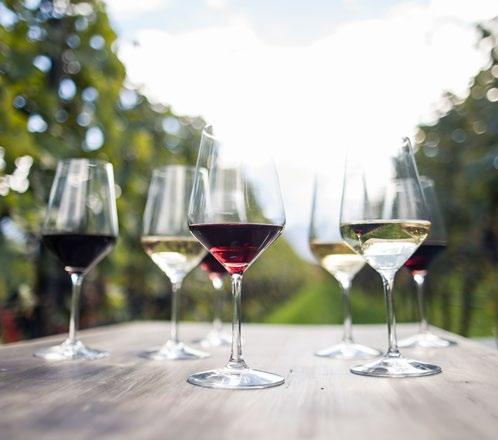
VIGNETO ALTO ADIGE
tive” grapes of Alto Adige: Schiava and Lagrein, two varieties that can boast a truly unmistakable identity. «The territory of Alto Adige is close ly linked to viticulture that has been practised here for over 3,000 years - says Eduard Bernhart, Director of the Consorzio Vini Alto Adige - it is also thanks to wine that Alto Adige has become an important desti nation since the wines, which have been exported over the centuries to many countries, have contribut ed to the notoriety of the area.» The wine tourism potential of the region is quite vast, able to offer solutions that are unlikely to be found in other Italian wine areas: «We have all the ingredients to offer a wide range of experiences. Obviously, the environ ment comes to our aid, bearing in mind that Alto Adige boasts a Unes co Heritage of inestimable value: the
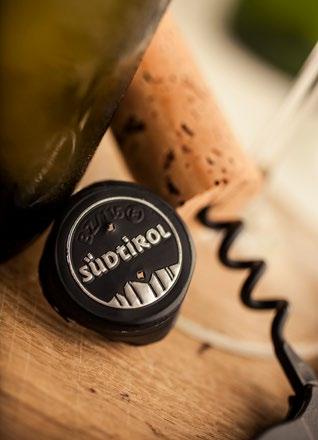
5.600 hectares of vineyards 20 typical grapes 36% red wines 64% white wines 200-1.000 m altitude of vineyards (asl) 40 million bottles/year 274 wineries 5.000 wine makers 1 2 3 MAGGIO 2O2216GAMBERO ROSSO GAMBERO ROSSO X CONSORZIO VINI ALTO ADIGE
credits photos:

1-3. Florian Andergassen

Tiberio Sorvillo
Alex Filz
Dolomites. Then the countless cycle and pedestrian paths among the vineyards, the Wine Route and over 250 producers who offer tourists the opportunity to experience the South Tyrolean viticulture firsthand.» In all this, the cuisine certainly does not play a secondary role: «It is another great wealth of this province. Our culinary tradition is varied and con tains Austro-Hungarian, Bavarian and Mediterranean influences and represents an important resource for those who want to deepen and experience our territory.» Within each area there are itineraries that are worth seeing, to name but a
few the wine route that winds along Lake Caldaro, the Gewürztraminer path that runs for 3.5 km through the fascinating scenery offered by the vineyards of Termeno, the Val Venosta wine trail, the Terlano wine route, the area of Santa Maddale na with the historic Schiava vines, the Cortaccia wine path, the Pinot Nero trail. But there’s more: getting to know the Alto Adige wine culture up close has many open roads, in the true sense of the word. There are many excursions and walks that can be enjoyed, all paths that lead to discover wineries and landscapes covered with grape vines that grow


luxuriant. For lovers of two wheels there is also cycling: the countless cycle paths on the South Tyrole an Wine Route offer the perfect combination of sport, nature and taste.» What’s the best season to visit Alto Adige? «Spring and sum mer certainly allow visitors to enjoy extremely interesting outdoor expe riences, but the plus of Alto Adige is the mild and sunny climate, so that both in autumn and in winter there are countless possibilities for those who want to discover the oenological heritage and the landscape beauties of this territory up close.»

4.
5.
Vini Alto Adige – Südtirol Wein - vinialtoadige.com 4 5 MAGGIO 2O2217GAMBERO ROSSO GAMBERO ROSSO X CONSORZIO VINI ALTO ADIGE

VINI D’ITALIA 2023 IS OUT!
Our flagship guide wil be presented in Rome on October 15. The English edition is going to be available in December
 by Marco Sabellico, Gianni Fabrizio, Giuseppe Carrus
by Marco Sabellico, Gianni Fabrizio, Giuseppe Carrus
What is the state of Italian wine? Well, we can tell you right off the bat that it's in excellent shape. And we can say that based on the numbers and figures col lected every year by our great team, 70 people who travel far and wide over six months, across our beauti ful country, tasting and evaluating thousands and thousands of wines (this year around 46,000, 27,000 of which are reviewed here in these pa ges). Incidentally, this year we're ce lebrating our 36th year. At the speed in which society is evolving today, 36 years is equivalent to a couple of geo logical epochs. This year we awarded 455 wines, a significantly lower num ber than the last edition. The result of an overall decline in quality? No,

far from it. The level of winemaking in Italy, harvest after harvest, conti nues to grow. About 2000 wines were considered worthy to participate in our final round of tastings, where the commission chose to slightly raise the bar this year. In short, the crite ria have become a bit more selective, but this was a deliberate choice to protect the value of the award, which continues to carry important weight in Italy and abroad, thanks in part to the translations that we publish every year (in English, German, Chi nese and Japanese) and to the incre dible promotional work that we've been carrying out, together with the producers themselves, for years (40 amazing events throughout the world). But be careful about judging the guide by such simple data, by the number of wines evaluated and
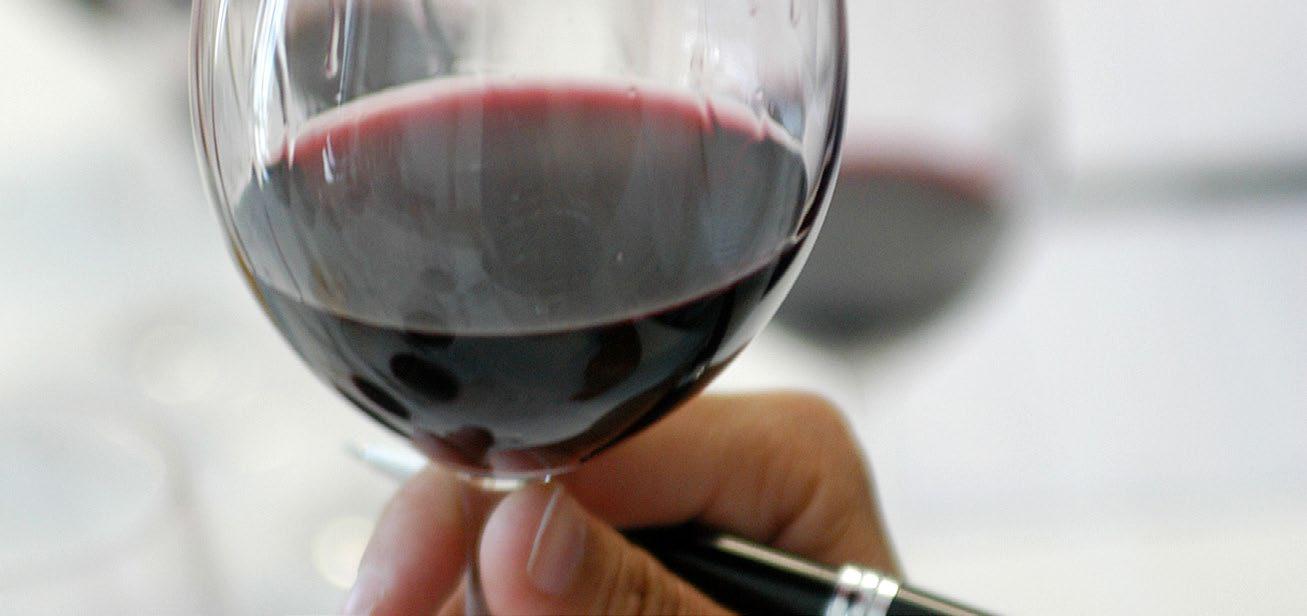
STORIES 20GAMBERO ROSSO NOVEMBER-DECEMBER 2021
46,000 27,000 2,573 455 5 VINI D'ITALIA 2023 IN NUMBERS Vini d’Italia 2023 del Gambero Rosso pp. 1,072 - price 30 € www.gamberorosso.it wines tasted wines reviewed wineries reviewed Tre Bicchieri languages: Italian, English, German, Chinese, Japanese 2626 PRODUTTORI 25421 VINI 455 TRE BICCHIERI 154 TRE BICCHIERI VERDI 67 TRE BICCHIERI SOTTO I 15 EURO VINI D'ITALIA 2023 PERIODICITÀ ANNUALE
awarded. This is only the “tip of the iceberg”: the tip is minimal compa red to the rest (which is from seven to ten times deeper). The months of work required to prepare the guide are a whirlwind of activity managed by individuals who collect samples, organize them, taste them blindly, yes, but also visit many wineries, completely rewrite the entries and update the data on our almost 3000 wineries, those who we believe to be the elite of Italian enology. Whether it still makes sense to print a book in the era of streaming content, social media, real-time data and the inter net is not for us to say. Though ours are not ephemeral impressions, they are a collection of new developments and evaluations that remain there, as a valid source for the future about what's happening in our sector. We
write for the consumer. Our readers, in Italy and throughout the world, are wine lovers who trust our evaluations and want to get to know the beauti ful world of wine more closely. Well, over 36 years, for them (and for you all) we continue to be an enological vade mecum that guides you in your travels and purchases. But this great work of analysis and rating has also become a valuable tool for professio nals in the sector. We have no prior positions or biases, we continue to taste the great classics as well as su perb, small-batch wines made with rare and semi-unknown grapes, from large producers to boutique wineries - just browse through these pages to see what we mean. In our our effort to taste and review as many wines as possible, a few years ago we opened the guide to the producers of near
by Ticino. It was an initiative appre ciated by many, both in Switzerland and in Italy, and which continues to prove successful. On the heels of this experience, this year we've expanded our pages to another border area, Slo venia's Brda, which is nothing more than the continuation of the soft hills of the Collio. Many excellent produ cers here share their climate, land, grape varieties, dialect and even fa mily with Italy's Friuli Venezia Giulia. Borders, moreover, are nothing more than a convention. We leave you with a quote by Kahil Gibran, “Should you sit upon a cloud you would not see the boundary line between one country and another, nor the boundary stone betwe en a farm and a farm. It is a pity that you cannot sit upon a cloud.” Maybe we have succeeded.
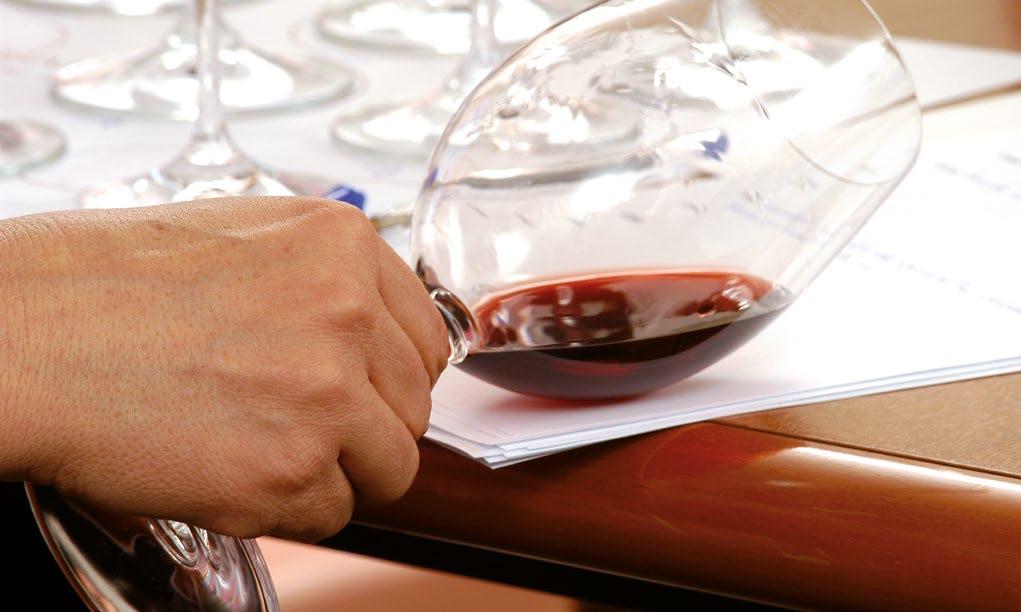
35 YEARS OF ITALIAN WINE 21GAMBERO ROSSO NOVEMBER-DECEMBER 2021
Cantina Librandi, heading towards carbon neutrality

Known for its constant commitment to research in the wine sector, the Librandi winery has always made sustainability a topic of central importance. This so cial, economic and environmental commitment was consolidated last year with the achievement of Equal itas certification and with the publication of the first Sustainability Report. «During 2021 and 2022 - explains Paolo Librandi - we made significant investments with the aim of increasing energy and technological efficiency in the cellar area: new machines and the modernisation of our refrigeration systems, with the aim of reducing electricity consumption by 10% and thus optimise the relationship between energy input and efficiency. At the same time, we started a process

of packaging conversion through the use of eco-sus tainable materials and carried out social sustainability initiatives, including a project for the recycling of cork that will soon be launched.»
«With a view to constant self-improvement - contin ues Raffaele Librandi - in recent months we have concluded the calculation and analysis of Carbon Footprint and Water Footprint indicators, with the aim of setting up a path to compensate for the emissions produced by the winery. All with the aim of acquiring information and data useful for the formulation of future projects and concrete initiatives for reducing consumption and the impact we, as a company, have on the environment. These are the first but very im
SEPTEMBER-OCTOBER 2O2222GAMBERO ROSSO GAMBERO ROSSO X LIBRANDI
portant steps that are giving shape and substance to a path in which we strongly believe and which aims to achieve carbon neutrality, i.e. climate neutrality.» From the analysis of the Carbon Footprint indicators it emerges that the main consumption items are made up of the production of electricity, the indirect produc tion of packaging (bottles, caps, labels, etc.) and their transport. On the Water Footprint front, on the other hand, in addition to the direct consumption of water

in the cellar, the items relating to the production of packaging and electricity are mainly called into ques tion. «It is our responsibility - concludes Teresa Libran di - to undertake these commitments and work to achieve the objectives in our sustainability report, motivated by the common desire to respect and protect our environmental heritage, an invaluable asset for present and future generations.»



Librandi – Cirò Marina (KR) – loc. San Gennaro – s.s. Jonica, 106 096231518 – librandi.it SEPTEMBER-OCTOBER 2O2223GAMBERO ROSSO GAMBERO ROSSO X LIBRANDI
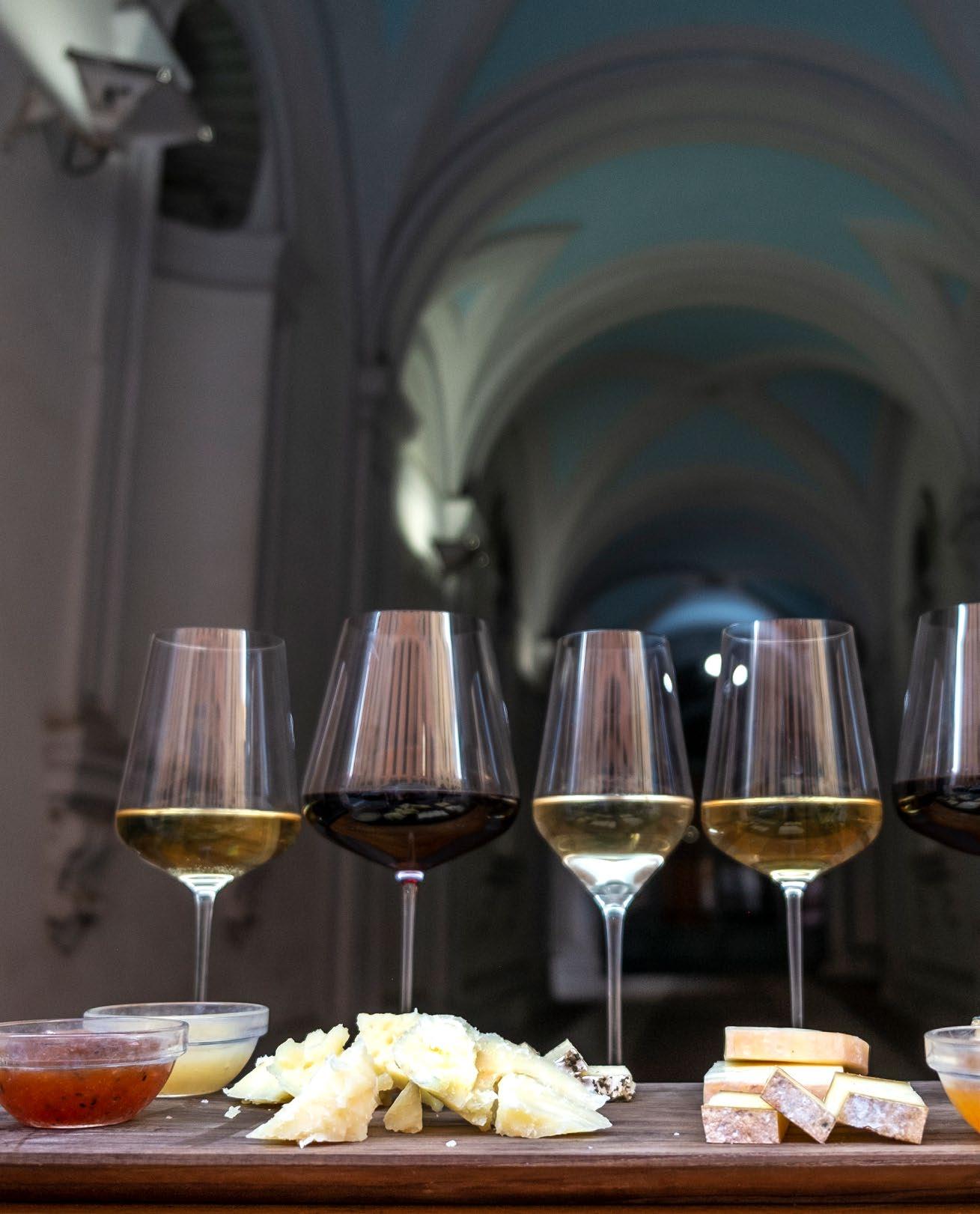
WINE & CHEESE THE ART OF PAIRING TWO NOBLE PROTAGONISTS OF THE DINING TABLE AND OF THE HISTORY OF ITALY
Variety, quality and territorial characterisation unite the beloved coupling of wine & cheese, a historical duo, linked by ancestral connections, yet both in constant evolution. Between dogmas and anarchist tendencies, pairing them in the right way remains a game of chance, as it may or may not work. The stakes? Mutual exaltation; the explosion of aromas and flavours that wisely describe our territory
 words by Valeria Maffei – photos by Patrizia Casamirra
words by Valeria Maffei – photos by Patrizia Casamirra
Anatural ensemble, a pair ing that boasts the flavour of the history of Italy: wine and cheese, a combination that over the centuries has transformed from a farmer's post-work meal, easy to find and simple to keep, to a succulent obsession with experts and en thusiasts looking for guiding principles to codify. If it's true that wine and food have been consumed in unison since the dawn of time, it is also true that this marriage of taste until a few years ago took place in completely random fashion, pairing what was available without seeking any particu lar gastronomic result. Only in more recent times, in fact, in the 1960s, a host of food journalists and some far-sighted somme liers decided to study the pairing of food and wine with a more technical-analytical method. Initially, attention was focused on regional cuisine; but, as the theme of pair
ing took shape thanks to specific method ology, other foods also became the object of study, especially cheese. And it could not be otherwise: the large assortment of cheeses that every corner of Italy can boast and the important variety of wines produced in our country - in fact there is no region of the Bel Paese that does not own a native wine and cheese - have made obvious the pairing between these two milestones of our best tradition.
WINE AND CHEESE: THE ELECTIVE AFFINITIES
Pairing wine and cheese is something to be experienced moment by moment. And if stating this is one of the Best Sommeliers in the World (he won in 1978), as well as Pres ident of the Italian Professional Sommelier Association, Giuseppe Vaccarini , it is a statement to be believed. «Cheese enhances the taste of wine by inducing the formation of

SEPTEMBER-OCTOBER 202226GAMBERO ROSSO
new odorous compounds. From an organolep tic standpoint, depending on the type of milk used, there will be considerable differences. So products made with goat's milk tend to have a fairly intense taste and "wild" aroma, while those made with sheep's milk tend to be full of taste and have a compact texture.»
The general principle for obtaining an ex citing pairing between wine and cheese - a theme to which Vaccarini has dedicat ed a successful manual (the Handbook of Pairings, Giunti 2008) - is to immediately identify their gustatory characteristics. In particular, the most intense and persistent sensations of cheeses are sweet and fatty perceptions, followed by juiciness and aro maticity. «I should emphasise - explains the sommelier - that cheeses appreciate pairings with all types of wine: in particular, they go perfectly with dry, sweet, dessert and forti fied white wines; much less with red wines because the protein substances and the

THE RULES OF THE GAME AND THE CORRECT WORDS

Nowadays, pairing food and wine is no longer a topic reserved exclusively for industry professionals, but in volves instead a growing number of enthusiasts. The architects of this enhancement of food and wine are especially those who, like professional sommeliers, day after day, experiment and define new preparations and new pairings. The organoleptic characteristics of each ingredi ent will guide the choice of the wines. However, this method of analysis of pairings requires specific skills, such as the ability to carry out a precise and rapid organoleptic analysis of the food and wine; the ability to qualify and quantify the sensations and to identify with semantic precision the most suitable expressions to describe the sensations. Only in this way can we arrive at a reasoned under standing and the creation of a harmonious pairing.
 Giuseppe Vaccarini , sommelier
Giuseppe Vaccarini , sommelier

SEPTEMBER-OCTOBER 202227GAMBERO ROSSO WINE & CHEESE
HENCE, BETWEEN WINES AND CHEESES, WE NARRATE ITALY

Our restaurant is deeply linked to the territory; it is characterised by a cuisine with a creative soul that makes use of select local products, with a short supply chain, from small producers. This is the philosophy that we also adopt in the choice of cheeses that come exclusively from the Lazio re gion, as in the case of the Conciato di San Vittore with its ancient history and the uniqueness of production. Most of our clientele is made up of foreigners and our intent is to introduce them to "different" products, which can compete with more "media popular" cheeses. Offering a selection of cheeses in a high-quality restaurant means allowing guests to savour the underlying ingredients, making tech nique take a step back and focus instead on the territory and the history of the small producers. And if we talk about cheese, we cannot fail to talk about wine;. As a matter of fact, if one thinks of a dish designed by a chef it is already born as a balanced preparation; while cheese needs a pairing to reach the maximum balance. Howev er, recommending a wine may change according to the time of service. In fact, foreigners, especially the French, ask for cheeses at the end of the meal, instead of dessert, while Italians choose them as an appetiser or as a starter. When the cheese replaces a pasta course, we recommend a soft triple crème product that goes well with bubbles, for example with a Chardonnay that has aged in a small barrel, with good softness and fine aromatic balance, or with a Riesling from Alto Adige or, to stay in the territory, with a Frascati Superiore made from ripe grapes. If, on the other hand, cheese is chosen as a dessert, we recommend wines with a higher structure than those enjoyed during the meal, for example an Amarone della Valpolicella, a full-bodied Barolo or a Port that goes very well especially with blue cheeses. On the plate we present 6 cheeses and obviously each one goes perfectly with a different wine; therefore from time to time we offer wine tastings with half-full glasses paired with individual cheeses, and we note that foreigners, especially those who cannot boast a dairy tradition like ours, are more willing to follow our advice and experiment, while for Italians, their taste, generally more compos ite, prevails.
fats in cheese does not always find harmony with the tannic component, typical of red wines, creating gustatory cacophony.» It is therefore essential to accurately identify the organoleptic characteristics of a type of cheese before choosing the wine that will accompany it. There is, furthermore, a rule of thumb to keep in mind and which is suggested by the type of course that pre cedes the cheese. «If cheese is served after a roast or braised meat, preparations that require pairing with full-bodied and round red wines, it is best to continue with a cheese that suits the same wine or even, following the logic of the progression of intensity of the flavours, more robust, big-bodied wines with a long taste-olfactory persistence must be served. One last note: before tasting the cheeses, which are best arranged on the serv ing dish in progression from the most delicate to the most flavourful and spicy, it is best to keep them at room temperature for a few
hours so that they regain their aroma, soft ness and better taste.»

PAIRINGS, BETWEEN RULES AND ANARCHY
«It was the 1960s when we began to discuss the correct pairing of wine and cheese,» re calls Davide Di Corato , journalist with important collaborations with trade mag azines and food and wine guides, author of numerous books, editor of two editions of the guide FuoriCasello and then, in 2013, moved to the rank of chef. «Those were the years in which white wines began to leave the status of orange wine (now so fashionable) to turn into real whites - says Di Corato - The technology of cold and controlled fermenta tion was just starting. I remember I was a young child when Veronelli started talking about the pairing of Gorgonzola and Marsa la. The French were ahead of us, but Italian sommeliers were also growing. In 1971, Pie
Federico Silvi and Federico Cucchiarelli , sommelier and sous chef at Moma in Rome
SEPTEMBER-OCTOBER 202228GAMBERO ROSSO STORIES
A WINE AT THE OPERA

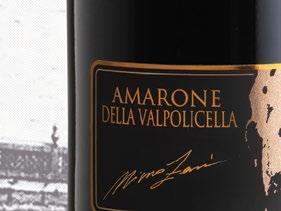



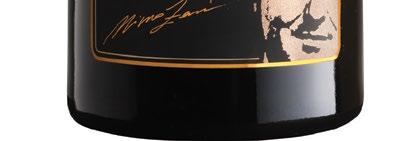

Behind every great interpretation there’s a history of passion, patience, respect, rigor, work and method.













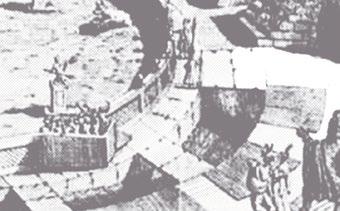




Zeni 1870 Araldo + Logo - Colore

ro Sattanino was the first Italian to win the world sommelier championship. In his native Turin restaurant, the Tastevin, he was among the first to propose wine by the glass paired to the dish and therefore also with cheese. Since then, the situation has evolved. I believe the basic rules are still valid today, but for some time I have abandoned the rigid dogmas of pairing to embrace a more anarchic philoso phy. Drink well and eat well! If the wine is good, you can pair it with whatever you want, as long as the preparation is at the same qual ity level as the wine. For those who love fol lowing rules, however, the suggestion I can give is to pair fresh cheeses with white and rosé wines, dry, light and fruity; while soft, bloomy cheeses go well with full-bodied, soft, velvety red wines. As far as aged cheeses are concerned, dry red wines are perfect; for blue cheeses: Marsala, dry passito or aged reds. Finally, goat cheeses go very well with white, rosé, light red, fruity and dry wines.»
A separate concept can be said for bubbles that go well on everything. Obviously it depends on bubble to bubble. All keeping in mind what Robert Julien Courtine , prince of French gastronomes in the first half of the century, used to say: "too often the tasting of cheese leaves the wine its best part and exalts it much more than it deserves. An excellent sour cheese would give the bril liance of genius to the most mediocre bottle..."
THE WHISKY AND ROBIOLA GAME
You can therefore decide to pair wine and cheese by choosing the criterion of simi larity or of contrast, or you can select the territory and traditions as guidelines, or even choose a less schematic philos ophy in which taste dictates the choice. But be careful: because, whichever way you choose, pairing wine and cheese is al ways a game that can succeed but also fail. Cheese is made with milk, which is one of the most complex and complete foods that exist in nature that very often shuns over ly clear rules. «As we know, codified rules

SEPTEMBER-OCTOBER 202231GAMBERO ROSSO WINE & CHEESE
and principles exist, but more than dogmas, it's indications that must be considered which may prove ephemeral in the face of the com plexity and variability of dairy products - ex plains Domenico Villani , Master Cheese Taster and Delegate Onaf for Rome - As an example, the sensations perceived may be dif ferent if you taste the central part or the rind of a cheese, as well as the order in which the products are tasted - first the wine or start ing with the cheese - will influence the result of the tasting. Same goes for the time elapsed between the tasting of one and the other product. Take as an example an unlikely pair ing on paper: a whiskey aged 15 years and ro biola. Well, after drinking the whiskey it will be necessary to spend some time to dampen, if not completely erase, the alcoholic note and keep the aromatic one. Only then will it make sense to taste the robiola.»
MARRIAGE ACCORDING TO TERRITORY
There are many similarities and different connections that bind dairy art and the

world of wine. In fact, cheese and wine, the highest expression of the civilisations of the places in which they are born, are united by being the result of ingredients that undergo fermentation: both products age and mature and, for both, climate and territory play a paramount role. And it is precisely the territory starting point that surprising gustatory marriages are born. Vincenzo Mancino has no doubts about it, as a careful selector and distributor with his DOL project, of the best artisan food productions in Lazio. «I believe that every territory has been modelled in the best way by man. Each biodiversity, each ecosys tem, rests on balance determined by a mul titude of factors in harmony with each oth er. For example, the cheese produced with the milk of animals that graze on the same territories where a vine grows, will have or ganoleptic modulations that will marry per fectly with the wine originating from that particular vine.» In Lazio, the possibility of choosing wines and cheeses that respect the geographical criteria are further

SEPTEMBER-OCTOBER 202232GAMBERO ROSSO STORIES
THAT SWEET NOTE IN WINE

How do I see pairing wine and cheese? It's difficult to fully enjoy che ese by drinking only water with it, but pairing wine and cheese well is not an easy task. They are brothers in the fermentation guided by nature and man. If you look for, as I have often done, a pairing close to perfection, you risk getting lost (to say the least). To be didactic, there is a strong risk of being banal and boring: the sequence in cre scendo is fine. Then fresh and drinkable wine and then the whites, the rosés and the reds and passito to chase and marry very fresh cheeses, goat and soft ripened and then hard pressed and finally blue cheeses. But it is never enough. I have been preaching on cheese for years that the pairing with jams and honeys is completely wrong even before being obvious or fashionable. And then, to avoid even being approximate, I will say that yes, the sweet note of the wine is certainly perfect in approaching, for example, very aged cheeses and certainly with blue cheeses. And that same "sweet" note, but let's say also generically fruity, of yellow fruits and which can evolve in ways (and times) that are also very complex, is a thread that connects and marries almost all cheeses. I think of Riesling, above all, the true sparring partner of cheese. Then we can talk about degreasing bubbles, it's true, less I would praise tannic reds, which I just don't find suited for cheese. But there is no better way than by experience, always remembering that cheese, like wine, is never the same, with a little awareness: wine is the fruit of a vintage, of two seasons, while cheese is produced every day and almost every day it will be diffe rent. Imagine making a code of rules....
 Enrico Panzarasa, cheese selector
Enrico Panzarasa, cheese selector

WINE & CHEESE
more quite many. «Starting with Matura no, a white grape variety present mainly in the region, which gives us the opportunity to best enhance the pecorino di Picinisco, one of the few DOP cheeses of Lazio, but also works very well with Ricotta, Pecorino Romano or with Marzolina. This cheese, when fresh, also goes well with Bellone or Malvasia pro duced between Ciociaria and Latina, while a more aged Marzolina pairs better with a wine that looks to the north of the region, such as a Cesanese di Olevano Romano. A wine that thanks to its spicy character, with notes of wood and red fruits, also contrasts perfectly with the Conciato di San Vittore. And againexplains Mancino - the Provolone di Formia is perfect to pair with a wine from the Lanuvini Hills that expresses beautiful minerality, a legacy of volcanic eruptions. Sparkling wines are also interesting: they help the tasting of fresh cheeses such as Mozzarella di Bufala. Still in Lazio, in Alta Tuscia there are some great goat cheeses that are perfect to savour with Vermentino, a vine that is experiencing a moment of renewed interest.»
REGIONS DICTATE THE PAIRINGS
There is certainly no lack of ideas for a pairing that plays with the flavours of the territory, also travelling down the Ital ian peninsula and making a stop in the Taburno area, in the province of Beneven to. This is a green patch located at high altitude and historically suited to sheep farming and dairy art, as well as produc ing about 70% of the grapes from all over the Campania region. Giovanni Esposito , sommelier and cheese taster who manag es sales of Cantina del Taburno, explains that there are 6 wineries in the area that produce Pecorino di Vitulano, a highly appreciated PAT (Traditional Agri-food Product). «The Pecorino di Vitulano in its seasoned version pairs perfectly with an aged Aglianico del Taburno Docg and with a cherry jam from Campo di Monte Taburno that plays to contrast the flavour of the cheese. While

SEPTEMBER-OCTOBER 202234GAMBERO ROSSO STORIES










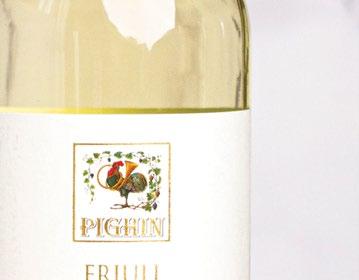



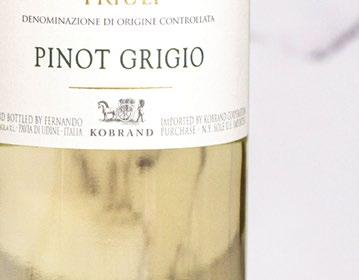
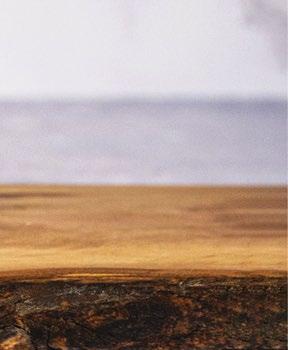

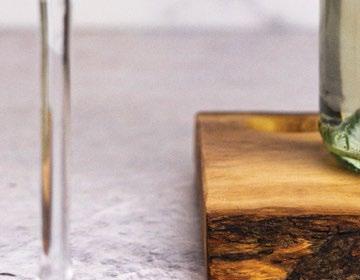

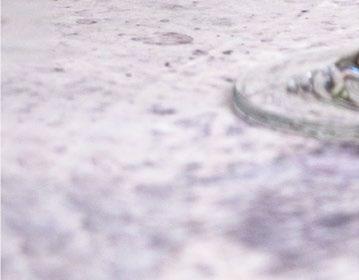
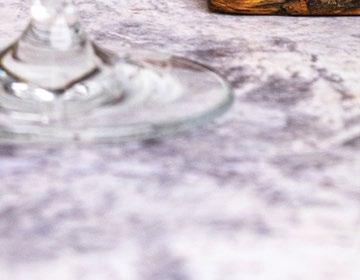



in the case of fresh cheeses, such as a primo sale or a semi-aged pecorino, the pairing with a late harvest Falanghina is perfect, which has a good residual sugar.» Continuing an ideal tour of taste, one can stop and think about the vastness of the offer of Piemon te and Lombardy, the Italian regions that boast by far the largest number of cheeses and wines, and consequently the infinity of pairings that these geographical areas al low. Not least Sicily, where, just as an exam ple, we find Piacentinu Ennese, a strongly spiced cheese using saffron and whole black peppercorns, perfect to taste with local pas sito. Not to mention Puglia, a rapidly grow ing region both in terms of wine and dairy production, where burrata or pecorino are best enhanced by local whites.
FROM WINE BARS TO HAPPY HOUR
To retrace the history of pairings in every day life, we can make a stop in Rome

A MAP TO FIND ONE’S BEARINGS

Pairing a succulent or greasy cheese, I recommend a wine with good alcohol and tannins; a fatty cheese tending to sweet goes well with a wine characterised by good sapi dity, good acidity or effervescence; a cheese with a ten dency towards acidity or tang pairs well with a soft wine; finally, a dairy product with a good palate-nose persistence requires a wine with an intense aromatic persistence. More specifically, in the case of creamy, fresh and lactic cheeses, such as robiola or moz zarella, fresh young white wines, such as Falanghina, are perfectly suited. Soft ripened, semi-fresh and sweet cheeses, such as Asiago and Toma Piemontese, go well with fruity red wines with good body and medium ageing, such as young Barbera, Dolcetto, Bardolino. Semi-hard cheeses such as Pecorino Toscano go well with medium-bodied reds with a good fruity content such as Morellino di Scansano or Schioppettino, while washed-rind cheeses such as Taleggio, with a pronounced taste, require a Pinot nero or a Gutturnio. Cheeses such as Grana or Cacioca vallo are well paired with structured reds, but also with whites possessing an important alcohol content. To finish, blue cheeses are enhanced by sweet dessert wines.
Domenico Villani, Onaf cheese taster

SEPTEMBER-OCTOBER 202237GAMBERO ROSSO WINE & CHEESE
In this sequence of shots, Carla Trimani slices cheeses in the Roman wine bar bearing the name of her family and where all the photos of Patrizia Casamirra's feature are set
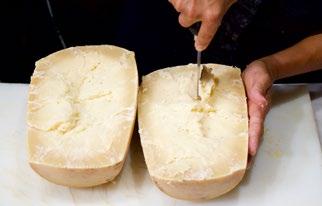



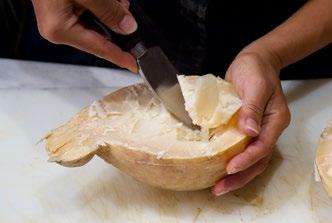


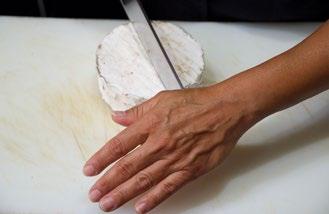
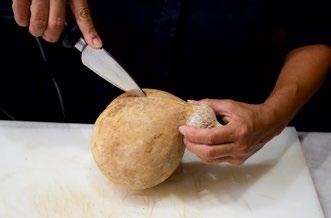
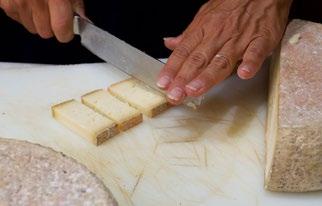



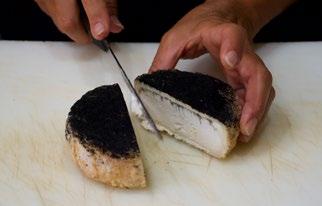

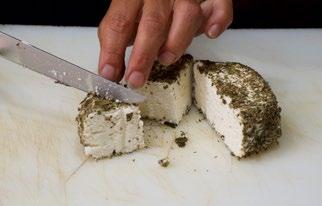
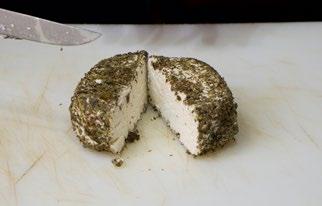


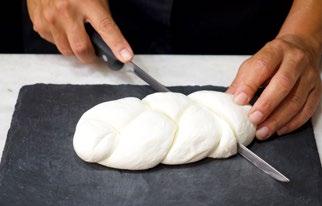
SEPTEMBER-OCTOBER 2022
at the beginning of the 90s, in 1991 to be precise, when the Trimani family - a sur name that for almost two centuries has been linked to wine - inaugurated a wine bar destined to make history in terms of pairings and guided tastings. It was the historical period in which wine bars, spinoffs of enoteca (wine stores), came into fashion.

«A bottle on a shelf is like a nice cashmere sweater in a jar. Wine cannot be simply de scribed: it must be poured, tasted, smelled,
experienced,» explains Carla Trimani , firmly at the helm, together with her brothers, of this successful Rome brand. «Our idea was precisely to go from only sell ing the wine to having people actually drink it: so we thought of setting up spaces where guests could try the labels paired with a food proposal that could act as a sounding board. We asked ourselves a lot of questions about the food to choose and in the end the choice fell on mozzarella di bufala. A rich product of extreme quality that does not need to
SEPTEMBER-OCTOBER 202239GAMBERO ROSSO WINE & CHEESE
be manipulated. The perfect match for this cheese? An acidic white with a carbon dioxide charge that's able to clean the taste buds of the fatty part left by the cheese… and, test after test, we arrived to choose Champagne.» Thus began the era of mozzarella di bufa la paired with French bubbles. These were the years immediately after the methanol scandal after all, and a movement very at tentive to quality was coming about in the world of wine.
«A decade later, at the beginning of 2000, the trend of aperitivo began to take hold in Rome too, which has always included a plat ter of cured meats and cheeses as its main feature: ricottine, stracchino, Tuscan mar zolina, primo sale di pecorino from Abruzzo for the hotter season; while in September it features Alpine cheeses, which stand out for their aromatic power and magnificent hints of herbs and flowers. In winter, the cheese board showcases for more structured cheeses. Over the years, with the increasing awareness and attention to the quality of what is on the table, consumers have begun to ask for raw milk cheeses, which therefore do not under go pasteurisation and keep intact the aromas and flavours associated with the different pas tures. Always on the wave of the same trend, for about ten years there has been a growing attention, especially on the part of young er people, towards natural wines, especially whites which, thanks to their oxidised notes, go well with blue cheeses.»
Fashions and trends aside, pairing cheese and wine is a personal choice, so relying on sensations, but also listening to com petent and learned experts can make the difference. «Among our customers - says Carla - there are those who rely on us and ask us for advice and those who prefer to choose for themselves, especially foreigners. If it is true that the Chinese, Japanese and Rus sians do not like cheese, it is the Americans who love to experiment and rely on us to try new things, literally crazy about it and espe cially for the more aged ones.»
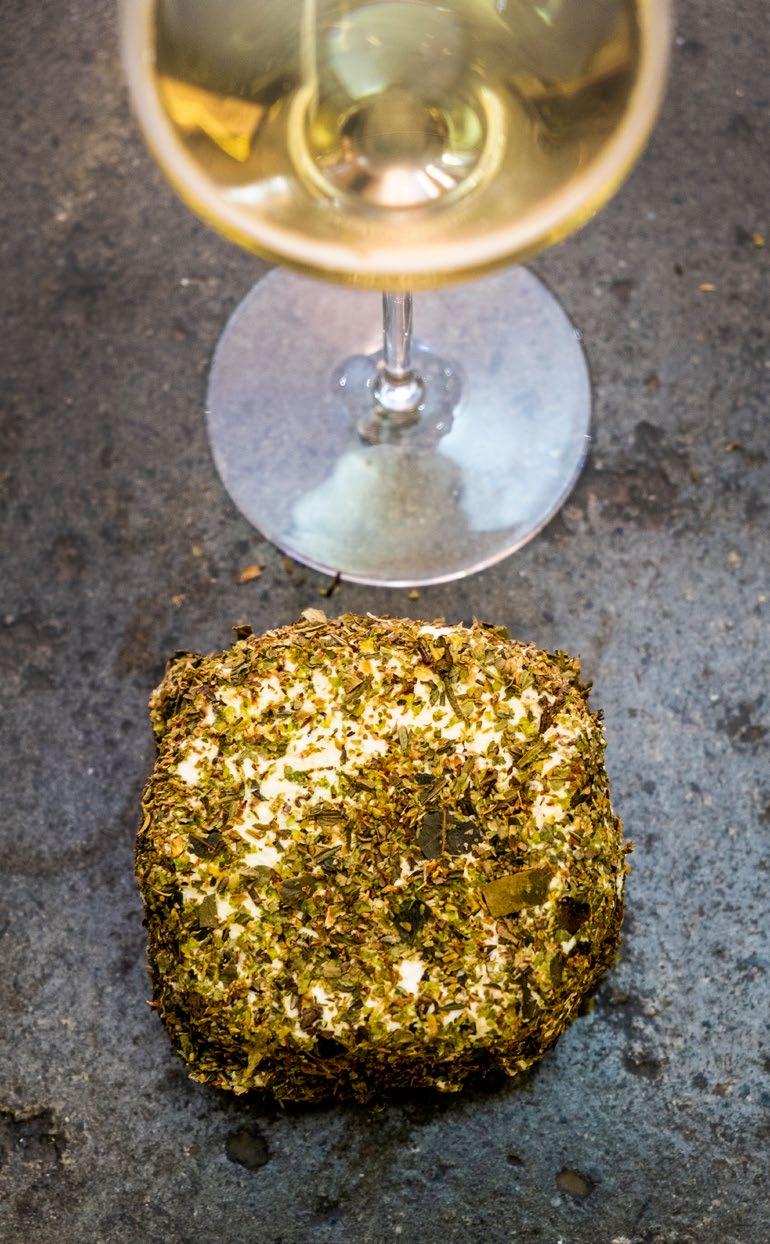
SEPTEMBER-OCTOBER 202240GAMBERO ROSSO STORIES


Our land, Our roots.
30 harvests of Graticciaia
iconic wine for Negroamaro
«It was 1986 when the first vintage of Graticciaia came out. It was the result of an idea that was also an ideal: the desire to resume and give value to the ancient technique of drying grapes for conservation pur poses, a practice commonly used by Salento farmers. Thus emerged the true essence of the Negroa maro grape, complex and at the same time versatile.» The words are by Francesco Vallone, fourth generation of Salento winemakers. «The greatest challenge for a small family business like ours consists in correctly interpreting market trends without diluting the identi ty heritage built up over the past
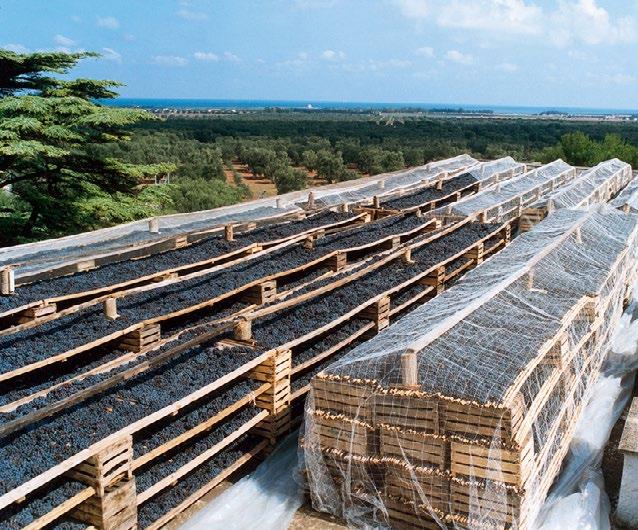
decades,» explains Francesco.
The birth of Graticciaia is the mod ern history of this Lecce winery which is divided into three corpo rate bodies and spread over 500 hectares of which 180 are vine yards. It all began in the Iore Es tate, in San Pancrazio Salentino, where the Caragnuli vineyard is lo cated: a rarity for the thickness and quality of the plants and grapes.
The vineyard was registered for the first time in 1955, but its origins al most certainly date back to about two decades earlier.
«From this vineyard, which has a very low yield per hectare (about 40 quintals), come the grapes des
tined for the Graticciaia, carefully harvested - says Francesco - After a careful selection of the bunch es, the ripe grapes are left to dry on racks on the terraces of Cas tel Serranova, the fortified family masseria farm.» And it is precise ly from the graticci racks that the name of this wine comes, which is largely the product of the art of in tertwining mats made from local reed that grow along the drain age canals running through the area. After drying, the vinification of the grapes begins: the physio logical process happening within the berries and then the fermen tation of the must in late autumn

1986-2016.
1 2 SEPTEMBER-OCTOBER 2O2242GAMBERO ROSSO GAMBERO ROSSO X VALLONE
when the temperature drops, lead the wine to a completely different evolution compared to traditional wine making. The slow fermen tation takes place at a controlled temperature and the first phase of ageing is carried out in French oak tonneaux.
For some years now, due to the in tense and growing climate chang es, the company has set up a clear inghouse to have an alternative available in case of adverse weath er conditions.
1. Bunches of negroamaro grapes trained in alberello system in the Caragnuli vineyard of Tenuta Iore: this is where Graticciaia is born
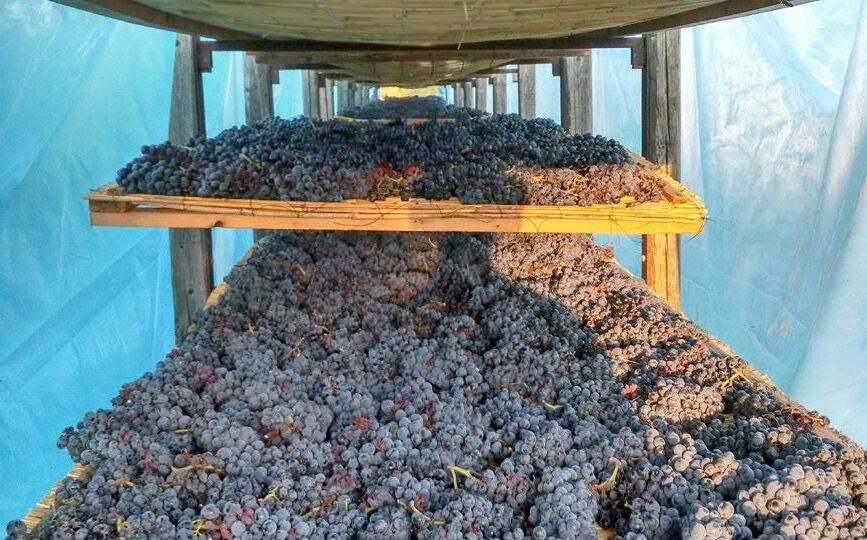
2. Wide on the racks used for drying at the Masseria di Castel Serranova

3. The racks, made with local Salento reeds
4. Graticciaia, the 2016 vintage is the perfect expression of Negroamaro

2016 vintage. Perfect balance
The 2016 harvest was characterised by an extremely balanced climate trend until just before the harvest. A sufficiently harsh and rainy winter, spring that tended to be hot and with little rainfall and hot but not sweltering summer. «This - explains Francesco Vallone - allowed the grapes to reach maturity in balance and in perfect health conditions.»
The rains of early September yielded grapes that were slightly more diluted in terms of sugar concentration and acidity, but with a perfect phenolic maturity consistent with the desired oenological objectives.
«The withering of the grapes, therefore, was prolonged for a few days, emphasising the organoleptic characteristics to the max imum: a consequence due precisely to this process which also avoids excessive sugar concentrations while keeping the wine in perfect balance.»
Vallone Società Agicola – Lecce – via XXV Luglio, 7 0832308041 – agricolevallone.com


43 SEPTEMBER-OCTOBER 2O2243GAMBERO ROSSO GAMBERO ROSSO X VALLONE
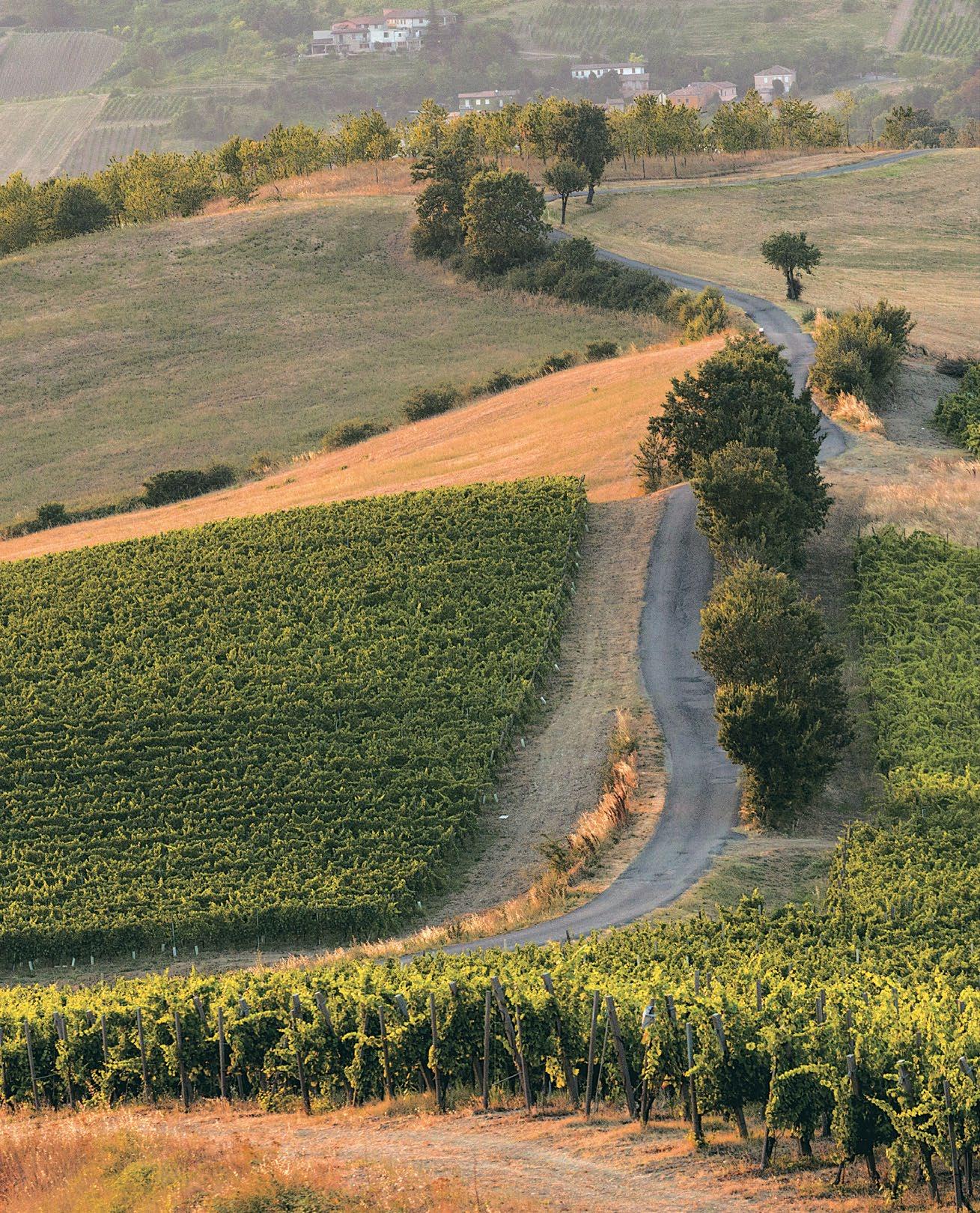
THE OLTREPÒ PAVESE, SO FAR YET SO CLOSE. WINE COUNTRY AND MORE…
Its nature is imprinted in cartography: the territory in fact has the shape of a bunch of grapes and moving between branch and the last grape is a continuous discovery of good things and important human capital. Certainly wine, but also cheeses, wheat, cured meats, fruit. And then the plain that becomes a hill that becomes a mountain
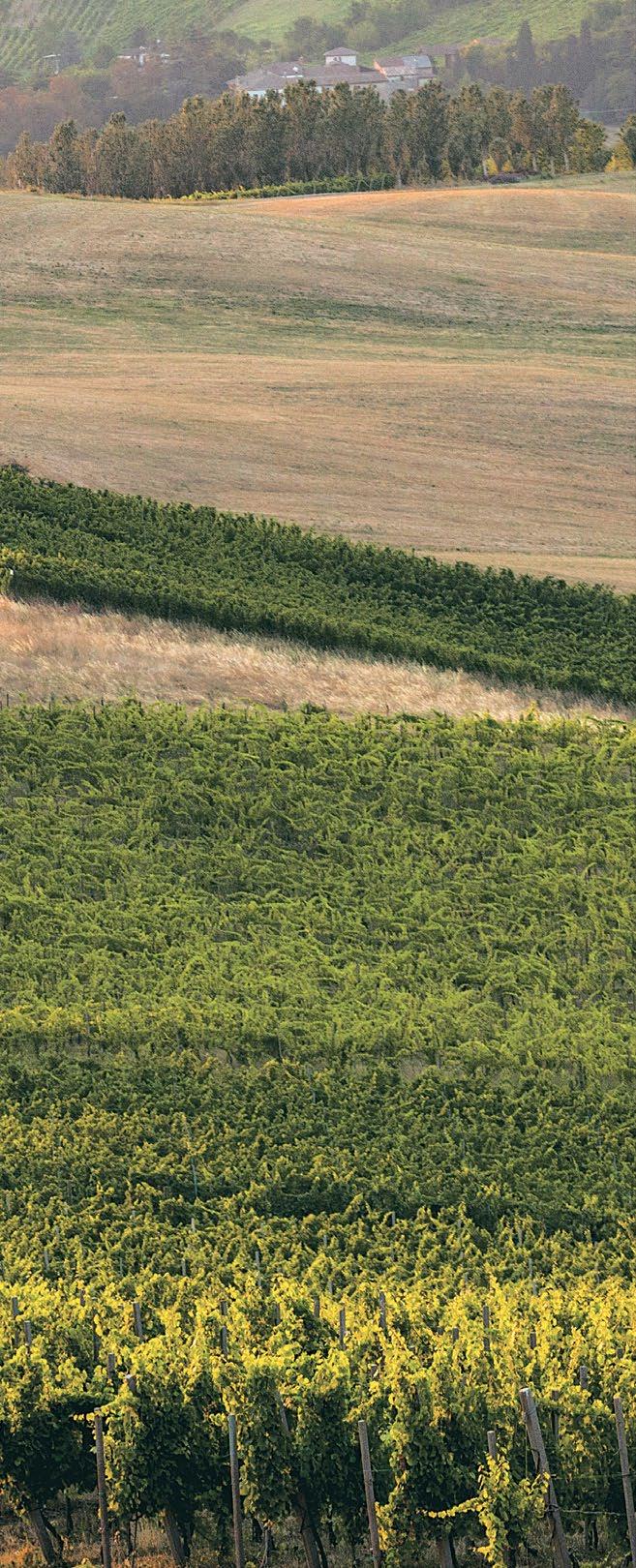 words by Francesca Ciancio - photos by Mario Didier
words by Francesca Ciancio - photos by Mario Didier
Oltrepò Pavese is a cross roads. Of soils, peoples, languages and tables. Where locals eat and drink things that mix with each other. Imagine a bunch of grapes that hang along three regions and touch a fourth: Lombardy, Pied mont, Emilia Romagna and Liguria. The Po river is the part attached to the branch, the bunch descends along the Tortona subregion to the west, Piacen za to the east and, going further down, reaches the Emilia lands where the plain gives way to the mountains. This is not your imagination: if you draw the boundaries of this territory with a pencil, you will see a bunch of grapes appear. Gianni Brera also wrote about it. A cluster shape that, coincidentally, immediately refers to the centrality of wine. We are in the south-western por tion of Lombardy, the most planted area in the region, with almost 14,000 hectares of vineyards. For those who know wine, thoughts immediately turn to Pinot Nero, the noblest red grape that exists and which makes Oltrepò Pavese the third wine-growing area in the world by extension of this type - the first two are Burgundy and the Champagne. In reality, if we talk about reds this is still the land of Croatina and Barbera which are much more present grapes.
WINE, BUT NOT ONLY WINE But this article is not only about wine. Rather, it is the story of a small shift that leads between landscapes and peo ple who hear the echo of big cities, but who proudly keep it away. The starting point is Milan, but it could be Turin, like Genoa. Or any other place that is geographically close, but emotionally distant. Today they call it "proximity tourism" i.e. the need to find spaces and times close to everyday life, but which give a sense of detachment. Almost ha
1
ven territories useful for recharging and unplugging. Oltrepò Pavese appears to be an excellent candidate for this, with the green of its vineyards and crops in terrupted by ridges of clay or limestone, the sarmase as they call them around here. On the highest spurs there are cas tles - many in these parts - which are the clearest representation of the territory's mediaeval past. Even further up it's al ready the Apennines which means oak trees, chestnuts, beeches. .
STORIES OF MILLS AND GRAINS: FROM VOGHERA STARTING FROM FLOUR Speaking of departures. But what is the arrival point? Many might think of Pa via due to the appeal that is in the name of the territory, but Voghera is the most important centre of the OP, a sort of gateway that has Piedmont behind it, really a few kilometres away, and which,
without interruption, drives towards other centres such as Casteggio, Broni and Stradella, along an almost straight line leading to Emilia. In Voghera we make our first encounters. Alberto Bertuzzi Borgognoni is the CEO of Molini di Voghera, that is, the compa ny that deals with the Oltrepò Pavese grains called Bologna, Blasco, Taylor, Aubusson, Bolero. The milling plant has its peculiarity in a four-wheeled mill and a birth certificate dating back to 1610, when King Philip III of Spain granted a milling licence to "Molino of the Four Wheels." Then we leap forward to the 1950s, when a new entity with the company name "Molini di Voghera Spa" was established. Here Alberto's family came into play: «It is the waters of the Staffora stream (hence the name of the homonymous valley, Ed.) that carry on the production, with diversions created over the centuries by the men of these areas. It
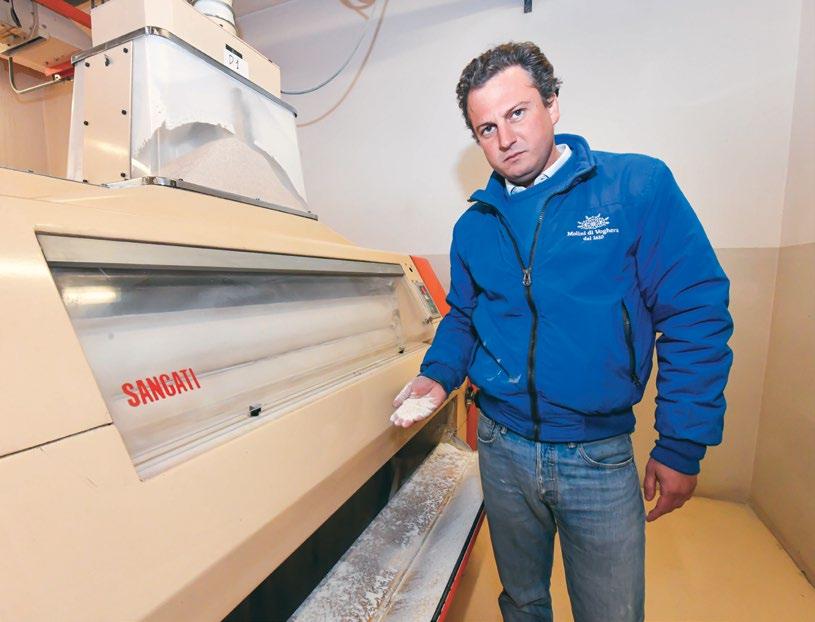
SEPTEMBER-OCTOBER 202246GAMBERO ROSSO STORIES
LOOKING UP
The Oltrepò Pavese can boast a significant record in a region with a strong industrial impact such as Lombardy, namely hav ing one of the brightest and clearest skies in Italy. Perfect for astronomical observations. This is why at Ca' del Monte we find an observatory that organises many recreational and educa tional activities, thanks to the large central dome with 60 seats that houses a digital plan etarium which, thanks to so phisticated technology, allows you to travel in the universe with animations, special imag ing and sound effects. Travel ling back to the time of the Big Bang. osservatoriocadelmonte.it
is the real lifeblood of the milling business. It is no coincidence that up to twenty years ago there were forty mills, today there are only two of us left. Our Oltrepò flour is the flagship of the production and is also the only certified supply chain in Italy as far as flour goes. In our case it makes sense to speak of Zero Km because the conferment is direct, the supply chain is short and stor age is safe.»
LANDS OF WATER: THE LIQUID SIDE OF OLTREPÒ
The poet Ada Negri wrote: "In Salice you dream and heal." She, among the VIP guests of the Grand Hotel delle Terme, enjoyed the exclusivity of a place that was truly, from the end of the 19th cen tury, the meeting place for so many no bles and figures of art and culture. The privatisation of the spas in the 90s gave the coup de grace to this place - like to others in Italy - decreeing its end.
PARADISE FOR TWO WHEELS
A true paradise for those who love cycling in nature, with tranquillity and variety. The territory is in fact one of the areas of Lombardy with less car traffic.
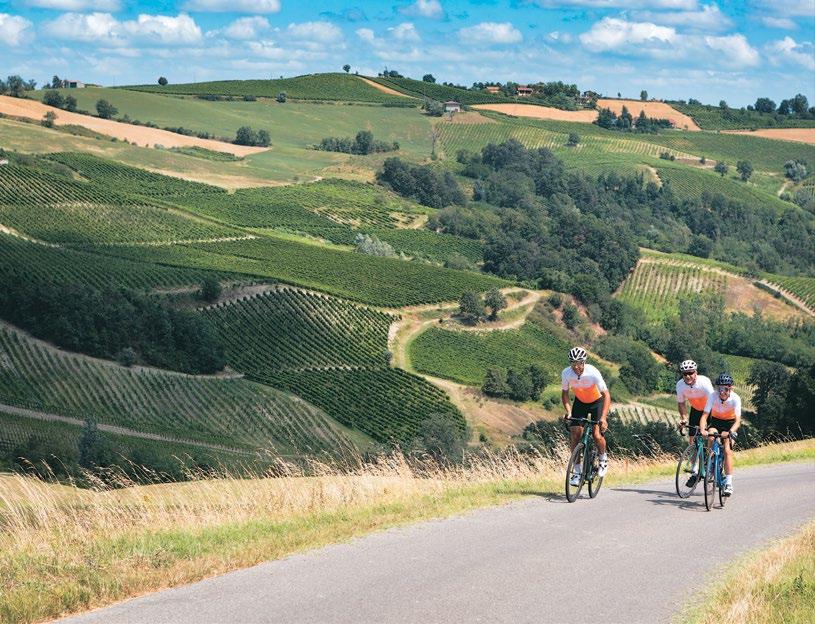
To be marked on the map before departure is the Greenway Voghera-Salice Terme, 30 km along the Staffora stream, which follows the Voghera-Varzi railway line in disuse since 1966. It is a pedestrian and cycle path that can be easily travelled by everyone due to the mild incline. For experienced and nostalgic cyclists there is the Young Fausto Circuit, dedicated to Italian cyclist champion Fausto Coppi from Castellania. Almost 40 kilometres with an alti tude difference of 700 metres. For lovers of two wheels and wine there is the Giro dei Vini starting from Cantina Terre d’Oltrepò in Broni, almost 90 kilo metres long with a challenging altitude difference of 1,608 metres. A tiring but wonderful journey through vineyards of the area. Finally, the Road To Riesling is a circuit of about 20 km that touches some historic wineries such as Tenuta Travaglino, Conte Vistarino, Isimbarda, Cà di Frara, Il Feudo Nico, Monsupello and more recent cellars in the hands of young innovators such as Finigeto, Cà del Gè, La Piotta. All ready to have their special wines tasted also with tastings in the vineyards and al fresco.
For cyclists: bikedivision.it - baisaebike.itoltrepoexperience.com
For hikers, there is a mobile app: I Sentieri dell'Oltrepò Pavese, created by itinerAria e
2 SEPTEMBER-OCTOBER 202247GAMBERO ROSSO OLTREPÒ PAVESE
THIS LAND IS MY LAND
For me Oltrepò Pavese is the land that my grandfather Pieri no always cultivated, helped by his two sons: it was wheat, fruit and vegetables used for domestic subsistence and then there was the wine that was sold instead to the peo ple who gave their grapes. Up to age 13 I participated in all the harvests: it was a huge party that lasted until the arrival of the broker who would pick-up the harvest. It was also a place linked to the "exodus" from Milan, in the summer, in search of milder temperatures when my father loaded us all into the car to go and look for cooler tem peratures on Monte Penice, the peak that houses some of the most im portant antennas of radio and television broadcast of the country. Who knows, maybe it was a sign of what I was going to do in the future! Cer tainly, after these outings, we would return home with a demijohn full of wine and various salumi from Varzi. Another sign of destiny is wine, in Oltrepò Pavese, because for some years now I have also had my own line of labels that I make together with Tenuta Giorgi. And I immediately liked the healthy competition in this sector. There is due rivalry, above all be cause it is carried on by new generations which, I am sure, will increase the value of Oltrepò Pavese wines.
– Gerry Scotti, television and radio host


At least until today: because the good news is that Terme di Salice will reopen by Christmas 2023. The new ownership is the same as Terme di Saturnia and Chianciano, a company which a few years ago also took over the Rivanaz zano spa, originally from 1913. Here we also find the Staffora stream that crosses the small town whose waters are classified as salt-bromine-iodine rich, and strongly anti-inflammatory. This was an area of mills and large plots to be cultivated with wheat. "Signora Piera" still remembers it, Piera Spalla, voice, hands, head, together with her daughters Michela and Francesca, of the Selvatico restaurant and inn. Born in 1912, part of the fortune of its cui sine is linked precisely to the patrons of the spas: «We had contracts with the spas to serve meals - recalls Piera - and so I learned how to make soups and broths for the elderly.» Today it would be a choice also dictated by fashion, but at Selvati co on the menu there have always been lots of vegetables. Its tables have also hosted many journalists-gastronomes, one above all Gino Veronelli who drew up the first sensory outlines of wines on these very tablecloths. Today the three women are engaged in the enhance ment of the Oltrepò Pavese products in full: from Varzese breed meats typical of the Staffora Valley, to the herbs grown by the Community of San Pietro which works on horticulture and solidarity gardens: «With them - Piera continueswe also have a project on bees and honey underway.» Here then you come for the malfatti, the agnolotti and the tajarin (Rivanazzano still falls within the dio cese of Tortona, therefore Piedmont) and there is also the dedicated aperi tif, OltreMito: cocktail "invented" by Sergio Daglia, Piera's brother-in-law, which is nothing more than a Milan-Tu rin concoction made with Bonarda and Campari Bitter.
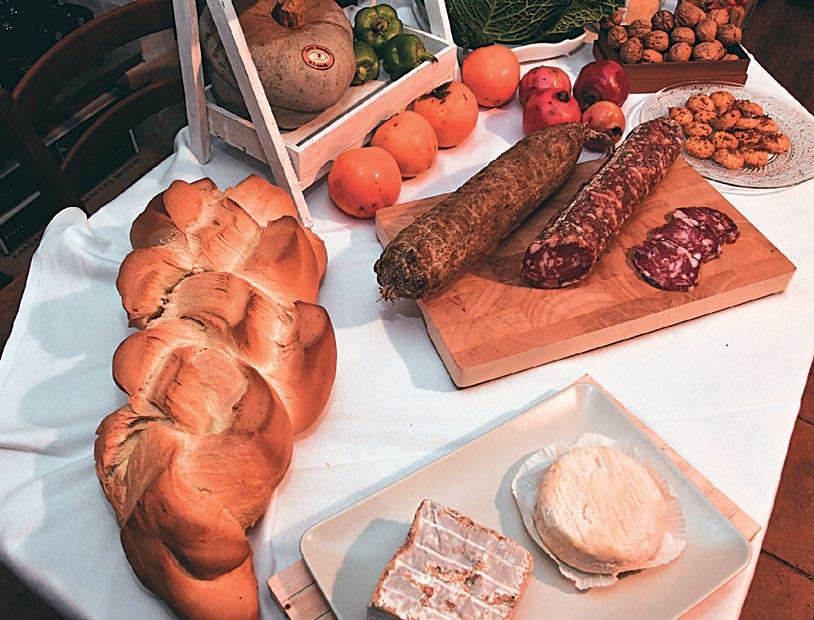
3 SEPTEMBER-OCTOBER 202248GAMBERO ROSSO STORIES
4
1. Alberto Bertuzzi Borgognoni, CEO of Molini di Voghera
2. Biking on the Oltrepò hills (photo Bike Division)
3. A grazing board from Selvatico restaurant-inn, run by Piera Spalla with her daughters Michela and Francesca
4. Boscasso: here Chiara Onida and Aldo Galbiati focus on breeding Camosciata delle Alpi goats

5. Buscone, a Bosmenso restaurant and charcuterie factory that produces an excellent Varzi salami
6. Nicole Volo of Galaverna, a company that produces almonds while keeping alive a traditional crop that is disappearing
7. Ottavia Vistarino, wine producer in Rocca de' Giorgi, with her company Conte Vistarino
ALONG THE HISTORIC SALT ROUTE
Così So important and precious that it is named white gold, salt has always been among the fundamental products for the economies of peoples. And it was an object of exchange with the products grown in the trade routes that came from Liguria. Among these was the Pomella Genovese, an apple from the Staffora Valley whose name is linked to the route it travelled. With its white and crunchy pulp, this fruit was in danger of extinction, were it not for a handful of producers who continued to grow it. To wards the Val di Nizza, the Valle Nizza farm owns part of the total ten hectares and is among the actors of the Pomella Pavese association, which also has the De.Co brand and is about to become a Slow Food Presidium. We met Gabriele Agosti from Valle Nizza during the first spring pruning: «The variety dates back
to the 19th century, we have been grow ing it since the 1960s and today we own one hectare. We apply little treatment because it is a resistant type and has a good conservation. Here it is also used a lot for the typical Mostarda di Voghera.» Moving slightly to the west, towards the border that separates Lombardy from Emilia, Oltrepò Pavese concentrates all its peculiarities in a few kilometres: hills, woodlands, castles, vineyards and many, many bees. Luckily so many that a university student, Matteo Cavan na, opened the first Apiary of Wellness in the Colli Verdi area (there are six teen throughout Italy - apiterapiaitalia. com): this is a wooden house to which several hives are attached where bees produce honey, royal jelly and propolis resin. Thanks to several cracks in the structure, insects can move in and out of the interior where in a sort of small relaxation room it is possible to breathe
the scents of the hive and relax listening to the sound of the bees at work: «Bee therapy has been practised for some timeexplains Cavanna - above all in Eastern Eu rope. As a student of Psychology I have al ways been fascinated by the complex world of these creatures and so I have dedicated myself to them. I now have fifty families.» Several years before Matteo, Chiara Onida also made a similar choice: to leave the city and choose a place to raise her family in a sensible way. The place chosen was Boscasso, a tiny town in the Colli Verdi area: here Chiara and Aldo dedicated their work to the Camoscia ta delle Alpi, a goat breed with a brown fleece and a black stripe running along the spine. «I never would have thought of being a dairy woman and breeder - recalls Chiara - we had taken a goat to keep the meadows around the house clean and to have fresh milk. Then from one they be came ten and a little at a time I quit my
SEPTEMBER-OCTOBER 202249GAMBERO ROSSO OLTREPÒ PAVESE
LOMELLINA. ADDRESSES

Where to eat
Guallina Trattoria
Mortara (PV) – 3387261869 –trattoriaguallina.it
Locanda Vecchia Pavia al Mulino
Certosa di Pavia (PV) – via al Monumento, 5 0382925894 – vecchiapaviaalmulino.it
RC Resort
Mortara (PV) – s.da p.le per Ceretto, 660 0384090200 – rcresort.it
I Castagni
Vigevano (PV) – via Ottobiano, 8 038142860 – ristoranteicastagni.com
Where to shop for food
Antico Forno Collivasone
Offelle di Parona – Parona (PV) v.lo F. Turati, 1 – 0384253018 – collivasone. it
La Corte dell’Oca
Mortara (PV) – via F. Sforza, 27 038498397 – cortedelloca.com
Salumeria Nicolino
FiumePo FiumeP OLTREPÒ, INSPIRATIONAL FOR MY DISHES
I worked a lot in Montescano, and from here I left for the city. I loved and love the Voghera bell peppers from Oltrepò Pa vese: I remember the skin as thin as silk, almost transpar ent, and their precise aroma. They lend themselves to be ing eaten raw, but also slow cooked: to this day I use them in an acidic green pepper risotto with smoked prawns and sage sauce. Then there are the Breme onions to which we have dedicat ed a dish this year as well. They have a special sweetness: they are also very good raw, although I prefer them cooked. When their sweetness is consumed delicately, without oxidation, they perfectly match the acidity of aromas such as almond or hibiscus. Finally, the Varzi salami: which of course I don't cook, but I gladly cut into slices and I like it when it is aged between 6 and 8 months. Among the people of Oltrepò I have some very special ones in my heart: one (or rather two) above all, Andrea Picchioni, a wine producer in Canneto Pavese, with his vegetable garden and his chickens, and his mother Rosa who makes the best ravioli with braised meat sauce in the world.
– Enrico Bartolini , chef at Mudec in Milan
job as a teacher and I poured all of myself to the farm that was born in 1989. To day we are the best Camosciata delle Alpi breeder in Italy.» The Il Boscasso farm is run almost exclusively by women and there are about seventy goats: «We make approximately fifteen cheeses, plus yoghurt. However, the production is small, an average of 45 kilos of cheese per day. In addition we focus on ancient grains from which we obtain the flour for mealtime on the farm, but the cultivation of wheat al ternates with forage useful for the goats. Every year we plant the garden and all the fields are fertilised with the decomposed manure of the goats.» Chiara's love for these animals is very strong: she de scribes them as sweet and very intelli gent creatures, «and then they are fit for women,» she smiles. The latest project in which she is involved with her herd is called "VoCapra", an app that the Uni versity of Milan is developing and that
 o
Ticino Guallina Trattoria
Locanda Vecchia Pavia al Mulino
RC Resort
I Castagni
Antico Forno Collivasone
La Corte dell’Oca
Salumeria Nicolino
Milano Pavia
Vigevano Mortara
Novara Magenta PIEMONTE LOMBARDIA
PIEMONTE
8 km
mangiare foodshop
LOMELLINA
STORIES
o
Ticino Guallina Trattoria
Locanda Vecchia Pavia al Mulino
RC Resort
I Castagni
Antico Forno Collivasone
La Corte dell’Oca
Salumeria Nicolino
Milano Pavia
Vigevano Mortara
Novara Magenta PIEMONTE LOMBARDIA
PIEMONTE
8 km
mangiare foodshop
LOMELLINA
STORIES
SEPTEMBER-OCTOBER 202250GAMBERO ROSSO
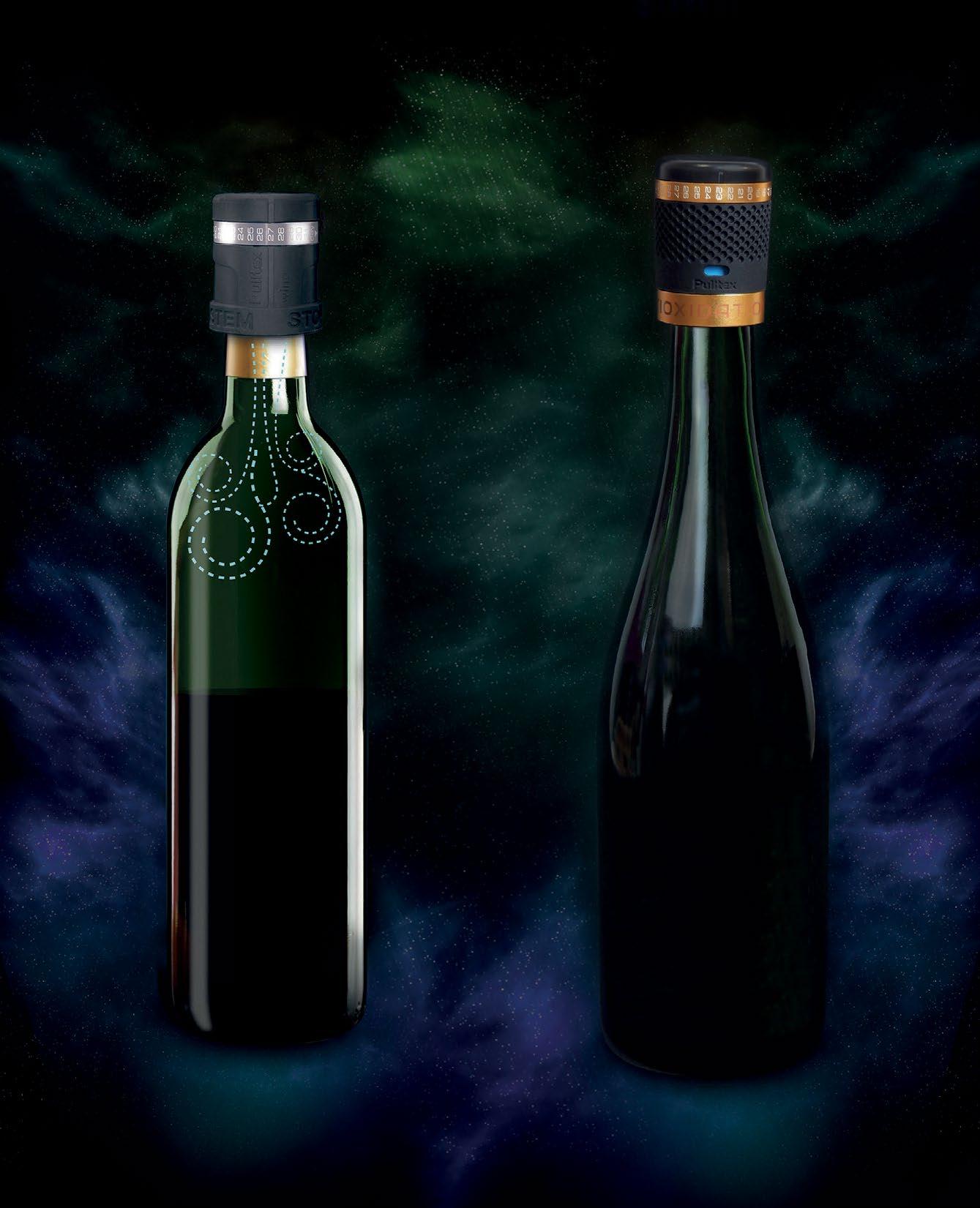
















w w w . p u lltex.co m Day 1 2 3 4 5 6 7 8 Other Savers Wine & Sparkling Antioxidation stoppers for enjoy the fresh taste in the opened bottle for up to 10 days Stoppers
collects recordings of the vocalisations of these animals. The goal is to improve human-animal relationship and the wel fare of farms, through the correct inter pretation of animal voice signals.
OLTREPÒ OF ALL THINGS

GOOD AND MADE BY WOMEN
In these parts there is also a rather wellknown bread called Micca or Miccone, which goes with the classic local meat, salami. Here the butchery tradition oc cupies an important and often all-female space in the story. There are also small and beautiful places like Varzi, the an cient mediaeval village officially in the prestigious circuit of "The most beauti ful hilltop villages in Italy," less than a year ago. The wisdom in making cured meats here is intertwined with the fact that Varzi was the crossroads of the salt caravans and still maintains the struc ture of the the first millennium: towers,
narrow alleys, covered walkways, a castle and the historic cellars still in use for the seasoning of salami. It is no coincidence that we speak of the capital of the moun tain aspect of Oltrepò: the plain, in fact, does not lend itself to the butchery tra dition, there are other necessary climatic conditions. «The marine one for startersthe sea breeze that comes from Liguria meets the mountain currents: here comes the “magic” of the seasoning of Varzi salu mi.» Speaking is Annibale Bigoni, direc tor of the Consortium for the Protection of Salame di Varzi which safeguards the enhancement of this Dop-branded prod uct. We talk about it in front of a plate of filzette and cuciti (two types of sala mi shapes) at the tables of the Buscone, restaurant and sausage factory in Bos menso, a district in the Varzi area, the town where only women make salami. Ornella and Roberta - with Martina, Or nella's daughter, who already entered
THE RICH FLAVOURS OF NEARBY LOMELLINA

A few kilometres from the hills north of the Po river, the Oltrepò borders on Lomellina, a historic area divided into 57 municipalities where the main gastronomic cul ture has always, since ancient ti mes, relied on rice. It is no coinci dence that here is one of the most renowned producers in Italy, Riser va Massimo, which some years now has been winking at foodies from the dishes of some of the best restaurants in the Peninsula. Ano ther great symbol of Lomellina is goose, protagonist for example in one of the historic restaurants of Mortara, home of this breeding ground, such as Guallina, and at the centre of one of the most po pular agri-food companies such as the one belonging to Gioacchino Palestro, La Corte dell'Oca, which also gave Mortara a festival (at the end of September) dedicated to goose salami, taking up a Re naissance tradition dating back to the time of Ludovico il Moro. Pro ducts of great taste to be savoured, for example, combined with the Mostarda di Voghera produced by Pianetta di Barbieri company, which since 2005 boasts De.Co. re cognition of the traditional special ty of the municipality of Voghera. Another specialty, sweet this time, is offella di Parona: a very simple biscuit made with flour, butter, su gar, eggs, olive oil and yeast and now also available in more sophi sticated versions, such as made with chocolate. Variants of the of felle are the sartirane, in the shape of a frog and produced in Sartirana Lomellina on the occasion of the Frog Festival, a super traditional animal in this terroir that lives in over 60,000 hectares of rice pad dies.
Flavours aside, Lomellina manages to amaze with its landscapes and monuments, starting from Vigeva no with its superb Piazza Ducale and the Torre del Bramante and up to small towns such as Cozzo, Rob bio, Frascarolo and Valeggio, where the memory of the distant Middle Ages lives on.
5
SEPTEMBER-OCTOBER 202253GAMBERO ROSSO OLTREPÒ PAVESE
STORIES
THE BEST WINES
OP Buttafuoco Storico V. Solenga '16
Flamberti
Canneto Pavese (PV) - fiambertivini.it
OP Pinot Nero Brut M. Cl. 1870 '16
Giorgi
Canneto Pavese (PV) - giorgi-wines.it
OP Pinot Nero Dosaggio Zero Farfalla Cave Privée '11 Ballabio Casteggio (PV) - ballabiowinery.it
OP Pinot Nero M. Cl. Extra Brut Rosé NorEma '17
Calatroni
Montecalvo Versiggia (PV) - calatronivini.it
OP Pinot Nero Pernice '17 Conte Vistarino
Rocca de' Giorgi (PV) - contevistarino.it
OP Rosso Cavariola Ris. '16 Bruno Verdi
Canneto Pavese (PV) - brunoverdi.it
OP Bonarda Frizzante Campo del Monte '19
F.lli Agnes
Rovescala (PV) - fratelliagnes.it
OP Brut M. Cl. Cuvée Tradizione '16 Bertè & Cordini
Broni (PV) - bertecordini.it
OP Buttafuoco Bricco Riva Bianca '17 Andrea Picchioni
Canneto Pavese (PV) - picchioniandrea.it
OP Buttafuoco Storico V. Pian Long '17 Scuropasso
Roccapietra - Pietra de' Giorgi (PV)scuropasso.it
OP Pinot Nero M. Cl. Brut '15 Ca' del Gè
Montalto Pavese (PV) - cadelge.com
OP Pinot Nero M. Cl. Brut '15 Pietro Torti
Montecalvo Versiggia (PV) - pietrotorti.it
OP Pinot Nero M. Cl. Brut Nature 110 '16
Torrevilla
Torrazza Coste (PV) - torrevilla.it
OP Pinot Nero M. Cl. Dosaggio Zero
M.V. '16
Cà Tessitori
Broni (PV) - catessitori.it
OP Pinot Nero Nature M. Cl. '16 La Piotta
Montalto Pavese (PV) - padroggilapiotta.it
OP Pinot Nero Noir '17 Tenuta Mazzolino
Corvino - San Quirico (PV) - tenutamazzolino.com
OP Pinot Nero Rile Nero '17
Marchese Adorno
Retorbido (PV) - marcheseadorno-wines.it
OP Pinot Nero Solo Nero '18
Manuelina
Santa Maria della Versa (PV) - manuelina. com
the company with a degree thesis on the organoleptic and sensorial analysis of Varzi salami - manage both the kitchen and the butchery and produce small but excellent quantities of Salame di Varzi Dop, pancetta and coppa. Then there is cousin Greta with her Le Cicale bistro, which sells the family's cured meats and homemade pasta from the restaurant. They live here and are the kind of fami ly without which these rural villages at the foot of the Apennines would already be long gone. Roberta is also a sommeli er and she can boast the most complete wine list in terms of local labels (with particular attention to verticals). The teachings are that of their grandfather who required the salami to mature from a minimum of six months to over a year in centuries-old cellars where the windows open and close to let the Liguria winds in. Thanks to this slow maturation, the most seasoned meats will also be the softer ones. For those who are comfortable with quality food, Varzi means above all sala mi. But the village also has a sweet recipe: an almond cake, that's very simple: but ter, flour, eggs, sugar, lemon zest and, of course, almonds. Once cooked, the dough produces a compact and durable cake - so much so that it's more common to break chunks off rather than slicing it - suitable for eating on the go (back to the central ity of the Via del Sale and trade-related movements). The sunniest position in the area has always favoured the growth of almond trees, plants brought here by the Saracens in the 10th century. Today there are few almond groves left, which is why the Galaverna company has become a rarity and a place where passersby and tourists come to take pictures. A small farm that was born from the rib of a his toric company in the area, the Patanti di San Martino farm, and carried on by two women who have restored lustre to both the nut and its local dessert, thanks to 1,500 almond trees on which, when the
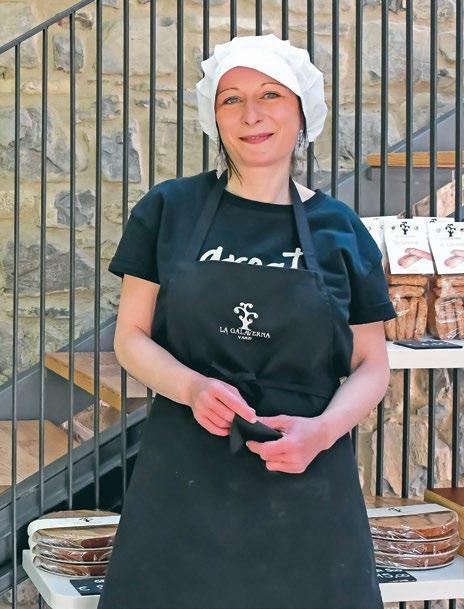
temperature is below zero, the “gala verna” appears, that atmospheric phe nomenon that creates a crystal patina on the branches, especially common when there is fog. Thus the historic recipe "ra Torta d'armàndor" has become just a lit tle more crumbly at the behest of Rita Alberti and Nicole Volo, two pastry chefs who work in this restored barn of the end of the 19th century and from which they obtained the laboratory and the shop: «We grow almonds in the high hills - explain the entrepreneurs - even if it's not be the most suitable place. The sea wind, however, helps and makes temperatures less rigid. They ripen later, that’s true.»
THE WINE AND THE NEW GENERATIONS
We found ourselves seated at a table at the Broni Regional Enoteca with Carlo Veronese and Gilda Fugazza, respective ly Director and President of the Oltrepò Pavese Wine Protection Consortium and
SEPTEMBER-OCTOBER 202254GAMBERO ROSSO
with Ottavia Vistarino, producer in Roc ca de' Giorgi with the Conte Vistarino company. The theme at the centre: what is the Oltrepò Pavese of wine, and what does it want to become. Let's start with people, with human capital, to under stand how much the people working in this place play in this leading wine and eno-tourist territory. The "operational arm" comes from Lake Garda, because Carlo Veronese - not surprisingly nick named the bianchista director - took to the enhancement of Lugana. Yet he was immediately struck by such an intact territory, albeit close to large cities and important commercial hubs: «Here lon gevity can make the difference not only with sparkling wines, but also with still wines. Of the 13,000 plus more hectares of the appel lation, only 3,000 are cultivated with Pinot Nero. However, in 2021 we managed to bot tle over 500,000 bottles of Oltrepò Metodo Classico Docg, with an increase of 23%. It
OLTREPÒ PAVESE
5 DISHES FOR 5 GLASSES BY PRATO GAIO RESTAURANT
From the Prato Gaio restaurant in Montecalvo Versiggia (PV), Giorgio Liberti, owner and sommelier and chef Daniela Calvi, his life and work partner, offer us five pairings of 5 local dishes and 5 Oltrepò Pavese wines.e.
1
Warm cod salad with potatoes, cannellini beans, tomato confit, crispy leeks and juniper oil
OP Vergomberra Met. Clas. Dosage Zéro ‘17 - Bruno Verdi Canneto Pavese (PV) - brunoverdi.it
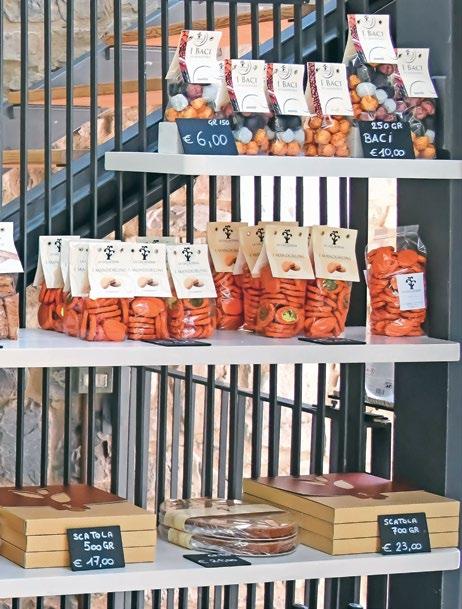
Elegant bubbles, aged over 40 months on the lees. The structure of the pinot nero, softened by a percentage of chardonnay, offers a glass with tropical hints, with nice acidity, which closes dry, accompanying and contrasting at the same time the sweet, fatty and balsamic sensations of the dish.
2
Duls in brusc (boiled chicken breast in sweet and sour sauce)
OP Torti Met. Clas. Brut ‘18 - Pietro Torti Montecalvo Versiggia (PV) - pietrotorti.it
Pinot nero with a percentage of chardonnay for a Brut with fine body and good dosage, which harmonises well with the irresistible taste (and per sistence) of the sweet and sour sauce of this forgotten recipe of the peasant tradition..
3
Agnolotti stuffed with mountain butter beef stew
OP Carillo 2021 - Frecciarossa - Casteggio (PV) - frecciarossa.com
A fully varietal pinot nero that stands out for its balance and pleasantness. The grace of the wine does not dominate the measured sapiness of the agnolotti, while the well-chiselled tannic texture helps to degrease the sauce, limited to a butter of exceptional quality.
4
Corned beef tongue millefeuille with green sauce and potato, carrot and tomato pie
OP NorEma Rosé Met. Clas. Extra Brut ‘19 - Calatroni Montecalvo Versiggia (PV) - calatronivini.com
100% Pinot nero for this rosé aged 24 months on the lees. Freshness and minerality go well with the delicate nature of the tongue, while the bubbles cleanse the palate of the fatty component of the sauce.
5
Neck stuffed with goose foie gras with raspberry jam, red onions and horseradish
Bertone 2018 - Conte Vistarino Rocca de' Giorgi (PV) - contevistarino.it
The softness of the Vistarino cru, with its notes of small red fruit and spices, goes very well with the sweet tones of the filling and jam on which this gourmet version of a classic of peasant cuisine is played.
6 SEPTEMBER-OCTOBER 202255GAMBERO ROSSO
never had never happened before. There is no choice between bubbles and still wine, we want to carry forth both incarnations of Pinot Nero. On the other hand, we hav en't invented anything new: already at the beginning of the 20th century the La Versa cooperative bottled up to one million bottles and in the 1980s, the then president - Duke Antonio Giuseppe Denari - announced the overtaking of the OP branded Spumante over Champagne in terms of consumption in Italy. As for the Pinot Nero vinified in red, it certainly has a more recent history, al though this type has been allowed to be reg ulated since the 1970s as long as at least 95 percent of Pinot Nero is used. In short, "one grape and two excellences," which is also the claim we are carrying around in the many initiatives of the Consortium.»
Healthy bearer of tales linked to both types is Ottavia Vistarino, the latest generation of the historic Conte Vistari no winery, born in 1850 in the Scuropas so valley, where her French great-grand mother planted pinot plants for the first time. It has always been considered the home of Pinot Nero: «I still keep - says Ottavia - all the paperwork that certifies how the Oltrepò Pavese was the main ba sin for the sparkling wine bases of many Italian wineries that made bubbles - which then largely means Piedmont - since the end of the 19th century. We paid a little for this price, that of being a supply territo ry, and of not being able to create a strong identification between grapes and territory, as happened in Franciacorta and Prosecco. Here's what we need to work on, to include Oltrepò Pavese as the main player among these realities. If you ask me why it went like this, I can answer that perhaps our area has had more history than people, but it is the latter that make a brand great. Today, with a generational change taking place, we have our chance, not only in wine, but also in pol itics, as in business. The arrival of external investors benefits us and I am thinking of the Corderos from Piemonte, the Mazzolinos,
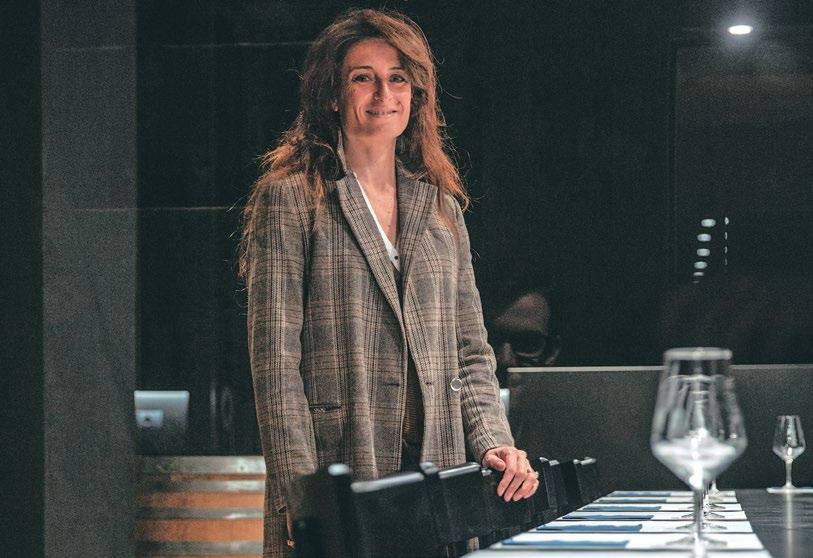
the Morattis from Castello di Cigognola, eyes and head that help us understand this place from a different, less homely perspective. The success of a denomination is linked to entre preneurial choices, one cannot think of rely ing only on the historical aspect. Let's think about the success of Pinot Nero in South Ty rol: it is an entrepreneurial choice, made by the men who have decided to talk about this grape variety. We too must do the same thing with our Pinot Nero vinified in red.»
KEY WORDS: SUSTAINABILITY AND QUALITY
Al Leading the Consortium there is an other woman, Gilda Fugazza, also a wine producer with the Mondonico com pany. Bocconi graduate, business advisor, she has the practical sense of someone who is familiar with numbers and proj ects: «The pandemic and repeated lock downs have sparked attention on Oltrepò Pavese as an uncontaminated, healthy and not so distant place, perfect for proximity tourism. The general public discovered our cycling routes, hiking trails, cultural visits
to villages and castles. The next step is to link all this to wine, but with a high-profile proposal. This is why, even if the income of the Classic Method and Pinot Nero are much lower than those of Bonarda, it is as a Consortium first that we are investing in promotion and marketing: the success of these, in turn, will make all of the other de nominations grow.»
Marketing better, a duty that the Pavia consortium team has set as a goal in or der not to leave room for the many - too many according to Director Veronese - negative news on the Oltrepò wine world: «We need concrete ideas to conveyunderlines President Fugazza - starting from sustainability which must be environ mental, economic and social. In one word, ethics. To do this, it is necessary to involve all the players in the supply chain and in the territory, with a circular gaze: from small producers, to bottlers, to social cooperatives. Their common goal is to sell wine and we are here to help them, but on one condition, that they make a pact with us based on quality applied to everyone.
7 SEPTEMBER-OCTOBER 202256GAMBERO ROSSO STORIES
»
ADDRESSES
Riserva San Massimo
Groppello Cairoli
Corana
OLTREPÒ PAVESE
OLTREPÒ. ADDRESSES
Where to eat
Buscone Varzi (PV) – loc. Bosmenso Superiore, 41 038352224 – ristorantebuscone.it
Le Cave Cantù
Bruno Verdi
Flamberti
Enoteca Regionale della Lombardia
Pavia
Scuropasso Roccapietra
Santo Spirito
Da Roberto
Isimbarda
Cordero San Giorgio
Andrea Picchioni
Cà Tessitori
Bertè & Cordini
Pasticceria Civardi
Villa Naj
Casteggio (PV) – c. ne L. Cantù, 62 03831912171 – lacavecantu.it
Le Cicale
Varzi (PV) - p.zza della Fiera, 1 0383 53050 - locandalecicale.it
Enoteca Regionale della Lombardia Broni (PV) – via Cassino Po, 2 0385833820 –enotecaregionaledellalombardia.it
Prato Gaio
Montecalvo Versiggia (PV) – fra. Versa, 16 038599726 – ristorantepratogaio.it
Da Roberto
Barbianello (PV) – via Barbiano, 21 038557396 – ristorantedaroberto.it
Fiume Po
Case Monache
Tenuta Mazzolino
Molini di Voghera
Voghera
Selvatico Albergo Ristorante Rivanazzano (PV) – via S. Pellico, 19 0383944720 – albergoselvatico.com
Broni
Le Cave Cantù
Stradella Pietra de’Giorgi
F.lli Agnes Torrevilla
Casteggio
Torrazza Coste
Montalto Pavese
Bereguardo Ruino
Villa Naj Stradella (PV) – via Martiri Partigiani, 5 038542126 – najstradella.com
Where to stay
Il Casale Denari
Santa Maria della Versa (PV) loc. Casale Denari 3428508591 – ilcasaledenari.it
La Locanda di Calvignano Calvignano (PV) – via Roma, 10 0383398014 – lalocandacalvignano.it
Canevino Rivanazzano Terme
Prime Alture Casteggio (PV) – s.da Madonna Vicinale per Campone – 038383214 – primealture.it
Where to shop for food
Il Boscasso – formaggi Ruino (PV) – loc. Boscasso 3388680179 – ilboscasso.it
Travaglino
Marchese Adorno
Ristorante
Fattoria La Robinia
Il Boscasso
PIEMONTE di Voghera
Pasticceria Civardi Broni (PV) – via Emilia 187 0385780549
Varzi EMILIAR OM A GNA 3929623542
Cicale
Ca' del Gè
where to eat
Stradella (PV) – via G. Di Vittorio, 5 3381046908 pasticceriacivardi.it
Verzate (PV)
Fiume Po 5 km Buscone Le pane
La Locanda di Calvignano San Massimo
Prime riseria Gropello Cairoli (PV)
LOMBARDIA
to
Selvatico Albergo farine Voghera (PV) – s.da Retorbido, 18 038341320 – molinidivoghera.it
Cascina San Massimo 0382823710 – riservasanmassimo.net
zafferano Mornico Losana (PV) – 3393959515
La Robinia
Il Casale Denari
Alture
Prato Gaio
Piotta
Manuelina
Pietro Torti Conte Vistarino
Calatroni
Giorgi
Ballabio
La
where
sleep foodshops wineries
SEPTEMBER-OCTOBER 202257GAMBERO ROSSO
Case Monache – panificio Torricella
–
f@CasaMonache Molini
–
e
Riserva
–
loc.
Fattoria
–
f@FattoriaLaRobinia
The first 50 years of Vigorello, champion in the far south of Chianti Classico
There are some labels (not many, actually) that have changed the history of Italian wine. Vigorello is certainly part of this exclusive club, one of the flagship products of San Felice, a very important winery in the Castelnuovo Berardenga area, in the southern offshoot of the Chi anti Classico appellation. With the 2018 harvest, which will be released on the market during 2022, Vigorel lo blows out its first 50 candles. We retraced some stages of this long history with Leonardo Bellaccini, the company’s oenologist.


What is the idea that inspired the birth of Vigorello?
Vigorello was born in 1968, from an idea of Enzo Morganti who in those years, ahead of his time, was the first to understand the great potential of Sangiovese and thus began to vinify it in purity, forev er changing the approach to the strict rules of the production of Chianti Classico which at that time required blending with white ber ried grapes. It was a small revolu tion, which represented a breaking point with the traditional produc tion system, but also the start ing point for the development of an entire territory and its chosen grape variety..
How has Vigorello changed over time?
Dalla nascita a oggi, Vigorello ha cFrom its birth to present day, Vigorello has followed a path in constant evolution through the
definition of the blends that have determined its style up to the pres ent one: in 1979 the partnership between Sangiovese and Cabernet sauvignon; in 2001 the inclusion of Merlot in the blend, which in 2006 entirely replaced Sangiovese; in 2011 the turning point, with the in troduction of Pugnitello, a native grape rediscovered through studies in our Vitiarium (experimental vine yard that collects over 270 varieties of grapes to safeguard the import ant viticultural genetic heritage), which since then has composed, to gether with Merlot, Cabernet Sauvi gnon and Petit Verdot, the blend of Vigorello that marks its uniqueness.
COMPANY ID
685 total hectares
188 hectares of vineyards: 150 hectares in Chianti Classico 23hectares in Montalcino 15 hectares in Bolgheri 15.000 olive trees

million bottles/year
export
labels
times recipient of Tre Bicchieri
What should we expect from Vigorello ‘18?
The 2018 vintage was charac terised by a not particularly hot
1,2
65%
20
18
JULY-AUGUST 2O2258GAMBERO ROSSO GAMBERO ROSSO X SAN FELICE
summer with rains regularly dis tributed throughout the vegeta tive period. When harvested, the grapes were fully ripe and through careful selection, which reduced the quantity by 30%. We achieved excellent quality. The different vari eties were fermented separately in oak vats and aged for 20 months in barrique. In the end, the blend produced a rich and concentrat ed wine, but with soft tannins that give character and balance; the ideal vintage to celebrate such an important anniversary.
What are the greatest vintages of Vigorello, according to you?
Speaking of great recent vintag es, we cannot fail to mention 2016 and 2015. Looking at the calendar, 2010, 2007 and 2001 are certain ly noteworthy. Selecting the best vintages of the Nineties, ‘97, ‘95 and ‘90 certainly stand out. The 1988 version is also great. Upon a recent tasting, I found the ‘78, ‘75 and even the ‘69 to still be in good shape: in the latter of course the variability between bottle and bottle is an aspect that must be taken into consideration.
Relais & Chateaux in the vineyards and in history

The history of San Felice has its roots as early as the beginning of the 8th century AD, when these lands were the subject of conten tion between the bishops of Arez zo and Siena. The recent history of the winery, on the other hand, can be moved much further ahead in time. The protagonist was Giulio Grisaldi del Taja, whose family took possession of the vil lage and its land in 1700. Realising the great agricultural potential of the estate, the Conte, around the 1920s, invested in rural activities and made his contribution to the foundation of the Chianti Classico Consortium in 1924. During the 1970s, San Felice was purchased by the Allianz Group, which start ed a deep renovation of the Bor go, with the creation of an avant-garde winery, and later, in 1991, with the impressive resto ration of the structures and the conversion of these into an “alber go diffuso,” the only Chianti Clas sico resort to enter the interna tional circuit of luxury hotels Relais & Chateaux. But San Felice is not the only winery of the Group, which over the years has looked around, in Tuscany, to in vest in two other territories at the top of regional winemaking, first in Montalcino, with the Campo giovanni brand, and then in Bolgheri with Bell’Aja.
Berardenga (SI)
loc. San Felice – 05773991

sanfelice.com


San Felice Castelnuovo
–
-
JULY-AUGUST 2O2259GAMBERO ROSSO GAMBERO ROSSO X SAN FELICE
Wine Tourism at Tenuta Luisa
Tenuta Luisa is a winery located in Friuli-Venezia Giulia, in the heart of the DOC Isonzo. The current patri arch is Eddi Luisa, who in the 1970s took over the estate, transforming it into a company that now owns 110 hectares of vineyards and pro duces 350,000 bottles. Wines are sold in Italy and exported all over the world. Flanked by his two sons – Michele who as an oenologist takes care of the cellar, and Da vide who as an agronomist takes care of the vineyards – Eddi has created a modern production re ality, known and appreciated for its intense, complex wines of great balance and elegance. A company that tells the centennial story of a family and a wine that bears the name of that family. To implement
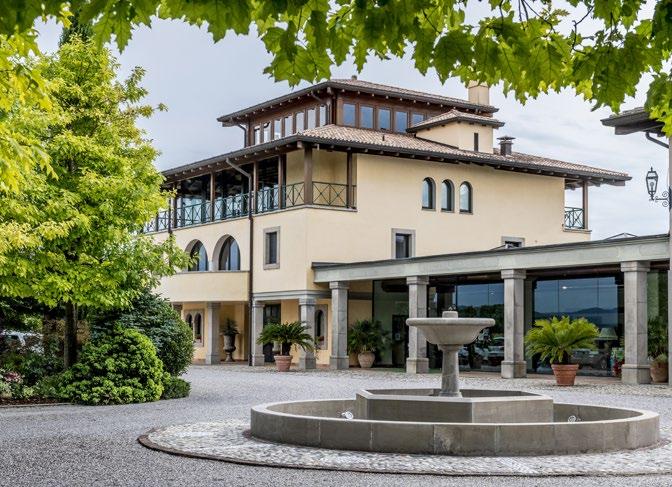
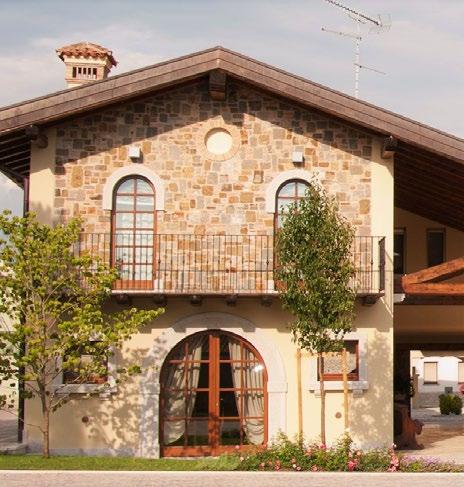
the offer, with the aim of creating relationships and exchanges also with the nations bordering the region, and to share these stories, the wines and the beauty of the territory surrounding the estate, the Luisa family has decided to renovate the first ancient win ery that since 2010 has become a guesthouse for friends and other guests. The Wine Resort Luisa has three rooms, one suite and sev en apartments. The hilltop village is available to those who want to enjoy the Friuli landscape, family hospitality and of course excellent wines, where the charm of history meets the pristine silence of na ture and where it’s possible to relax by slowing down the pace. Wine tourism is in strong growth and
expansion, and visiting the cellar, together with tasting the wines, remains the wine experience par excellence.
At Tenuta Luisa, however, it’s pos sible to live experiences that go even further as the family is ready to welcome its guests and offer a series of activities ranging from ex tended visits to the entire compa ny heritage, to more convivial tast ings such as picnics in the vineyard or dinners at sunset between the rows. An experiential wine tourism that has the great merit of promot ing the most genuine and healthy part of the territory, and whose engine is the desire to share and proudly show one’s work and its fruits, with the intent not only to inform and to entertain but even
JULY-AUGUST 2O2260GAMBERO ROSSO GAMBERO ROSSO X TENUTA LUISA
1. Tenuta Luisa - the cellar

2. The guesthouse
2. Villa Luisa Strassoldo
more to excite. A path that starting from storytelling reaches story liv ing, in which the tourist becomes the protagonist of the story that the territory, of which wine is the first ambassador, tells.

Furthermore, in 2018, the Luisa family purchased Villa Luisa Stras soldo, an ancient 17th-century Ve netian residence with in classic and neo-Gothic style located in Aiello del Friuli, known as the “city of sundials.” Built by the Strassoldo Counts, one of the most important families of Friuli nobility, it then

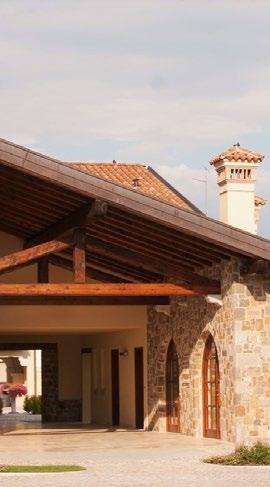
passed to the Lazzari, Sabot and Tonutti families. The main building has a tripartite plan, repeated on two floors, and has a set of rooms positioned around the central hall. The refined and elegant Sala del Vino is characterised by a ceil ing with ancient exposed beams, Murano glass chandeliers and a Carrara marble fireplace. The Sala degli Affreschi, on the other hand, which owes its name to the beau tiful frescoes adorning the walls, has large windows overlooking a very suggestive setting. The Bridal
Suite, ready to welcome the new lyweds for their wedding night, is enriched by exclusive furniture. Villa Luisa Strassoldo is surround ed by a park of over 30,000 square metres and is the perfect location for weddings, ceremonies, busi ness meetings and photo shoots. Whatever the occasion, this place with its centuries-old history, and the hospitality of the Luisa fam ily, will transform the mo ments spent into wonder ful and unforgettable memories.
Tenuta Luisa Via Campo Sportivo 13 – Mariano del Friuli (GO) – +39 0481 69680 - www.tenutaluisa.it
JULY-AUGUST 2O2261GAMBERO ROSSO GAMBERO ROSSO X TENUTA LUISA
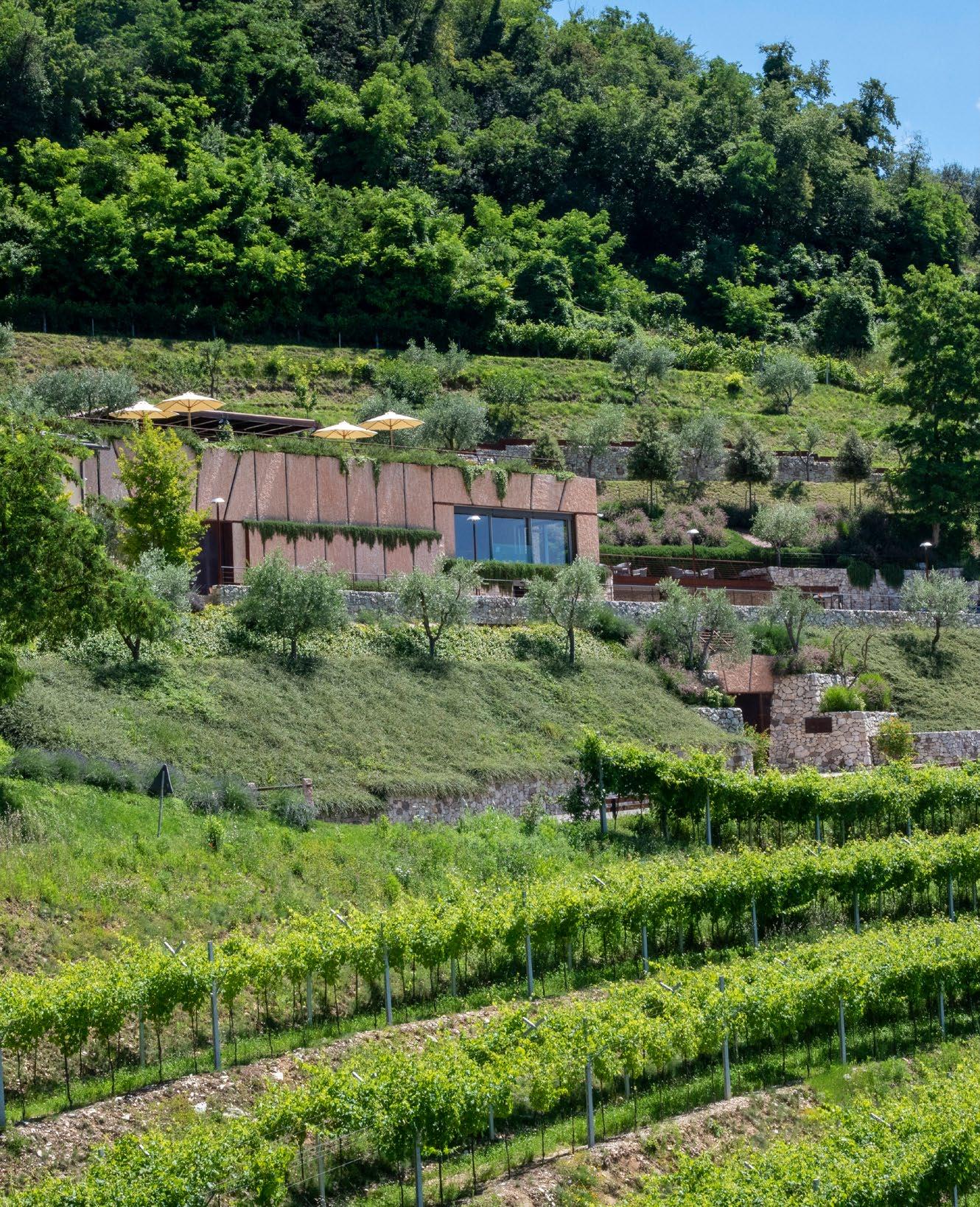
We start the journey with wine, which has redesigned the borders and profiles of Valpolicella, but we discover a varied and quality food offer, evocative landscapes and a desire to affirm territorial identity. Whilst keeping together tradition, innovation and typical Venetian know-how
 words by Emiliano Gucci - infographics by Alessandro Naldi
words by Emiliano Gucci - infographics by Alessandro Naldi
THE OTHER VALPOLICELLA: A SUGGESTIVE LAND OF WINE TO BE DISCOVERED WHILE STAYING IN VINEYARDS AND OLIVE GROVES
Sart this exploration with wine, because wine has re designed the boundaries and profiles of Valpolicella, catalysed and promoted its character, created a brand exported all over the world. But walking through its streets, stopping to observe, ask, taste, attempting unprecedented turning points and broadening horizons, we dis cover a network of proposals that binds a long-standing gastronomic culture to wine, offering multiple reasons for spending a few days in the embrace of these lands. Maybe staying in a context that combines the joys of the table with the charm of a countryside with surpris ing landscape views, high-value Veneto villas and charming villages. The heart of the classic Valpolesèla (val polis cellae, i.e. valley of many cellars) beats in the first three valleys that de
scend from the Lessini mountains to wards the Adige and the city of Verona, dividing into the municipalities of Fu mane, Negrar, San Pietro in Cariano, Ma rano and Sant'Ambrogio di Valpolicella.
THE HEART OF A VALLEY OF MANY CELLARS

This is where the Amarone miracle was born, the prerogative of historic fami lies of winemakers who have kept the tradition while looking far away. Soils, climate, native grape varieties (Corvina, Corvinone, Rondinella, Molinara, Osele ta) and the typical method of drying (at the time it was developed to give body, alcohol) yield wines that make the most of territorial expression, to then rise to the status of meditation nectars, iconic, monumental, or rather surrender to the table and approach the local gastrono my. «Heading up towards Lessinia it's good
to pair a nice plate of cheese with our Am arone, which does not necessarily have to pair with feathers, i.e. game,» says Paolo Speri, seven generations in the field for a family representative of the history of the territory. The reference is to their Sant’Urbano, produced from vineyards that rise up to 400 metres above the cel lar of San Pietro in Cariano. «But I would not have any hesitation even to pair such a fresh, enjoyable Valpolicella Classico with a nice sea bass baked in a salt crust.» Work ing in the wake of elegance (even when the market was asking something else), focus ing on the freshness of Molinara, provide for wines «whose secret is flavour, a cleansing of the palate that invites another sip.» And we persevere in the tradition by growing vines with the typical Speri pergola, a reinterpretation of the classic Veronese, while «our farmers help us to pass on the know-how of the place.»

1 64GAMBERO ROSSO STORIES SEPTEMBER-OCTOBER 2O22
THE CLASSIC SOUL OF A TERROIR
Even the great Giuseppe "Bepi" Quin tarelli, visionary mastermind behind the success of Valpolicella, never gave up on his concept of classicism and his large barrels of Garbellotto, «wine must taste of grapes and not of oak,» as his grand children Lorenzo and Francesco re call, today at the forefront of the Negrar winery. With the same spirit, the same consistency and confidentiality (nary a website or a social network, «which we don't even have for personal use»), the idea of wine as «never linked to quantity but to quality, even in relation to the daily table.»
So the Igt Primofiore (with Cabernet to smooth out the local varieties) goes well with «boiled meats with pearà, the region's typical sauce made with grated stale bread, broth and pepper,» as their mother Fioren za recalls. «But Bepi's favourite wine was Recioto, born in Roman times with the dry
ing of the grapes.» which here takes place both in crates and on arelle (trellises), and by weaving the bunches into beauti ful braids then hung from the ceiling.
«My father considered himself good when he made a great Recioto, more than a great Amarone,» remembers Marilisa Allegri ni «It is a wine that pairs very well with desserts, chocolate cakes and our sbrisolona, but also with certain cheeses.» If her father Giovanni and her brother Franco (who died very recently) are recognised by in tuitions that determine the affirmation of Valpolicella in the world, it is entirely Marilisa's vision that leads to acquire and restore the prestigious Villa della Torre in Fumane, a true Renaissance monument.
«We used to have vineyards around here and I used to play with them as a child, a friend of the owners' daughter. And I was entranced by the rooms, by the fireplaces,» those gro tesque masks in whose jaws the fire
18 TRE BICCHIERI AROUND VALPOLICELLA
Amarone della Valpolicella '17
Monte Zovo Famiglia Cottini Caprino Veronese (VR) montezovo.com
Amarone della Valpolicella Cl. '17 Allegrini – Fumane (VR) –allegrini.it
Amarone della Valpolicella Cl. '12 Bertani – Grezzana (VR) –bertani.net
Amarone della Valpolicella Cl. '16
Brigaldara – San Pietro in Cariano (VR) brigaldara.it
Amarone della Valpolicella Cl. '13 Quintarelli – Negrar (VR)

Amarone della Valpolicella Cl. Campolongo di Torbe '13 –Masi Sant'Ambrogio di Valpolicella (VR) masi.it
Amarone della Valpolicella Cl. De Buris Ris. '10 – Tommasi Viticoltori Pedemonte di Valpolicella (VR) tommasiwine.it
Amarone della Valpolicella Cl. Monte Ca' Bianca Ris. '16 –Begali loc. Cengia - San Pietro in Cariano (VE) begaliwine.it
Amarone della Valpolicella Cl.
Vign. di Ravazzol '16 – Ca' La Bionda Valgatara (VR) – calabionda.it
Amarone della Valpolicella Cl.
Villa Rizzardi Ris. '15 Guerrieri Rizzardi Bardolino (VR) – guerrieririzzardi.it
Amarone della Valpolicella Famiglia Pasqua Ris. '13 Pasqua – Verona – pasqua.it
Amarone della Valpolicella Maternigo Ris. '16 – Tedeschi Pedemonte di Valpolicella (VR) tedeschiwines.com
Amarone della Valpolicella Monte Danieli Ris. '13 – Corte Rugolin Marano di Valpolicella (VR) corterugolin.it

2
65GAMBERO ROSSO VALPOLICELLA SEPTEMBER-OCTOBER 2O22
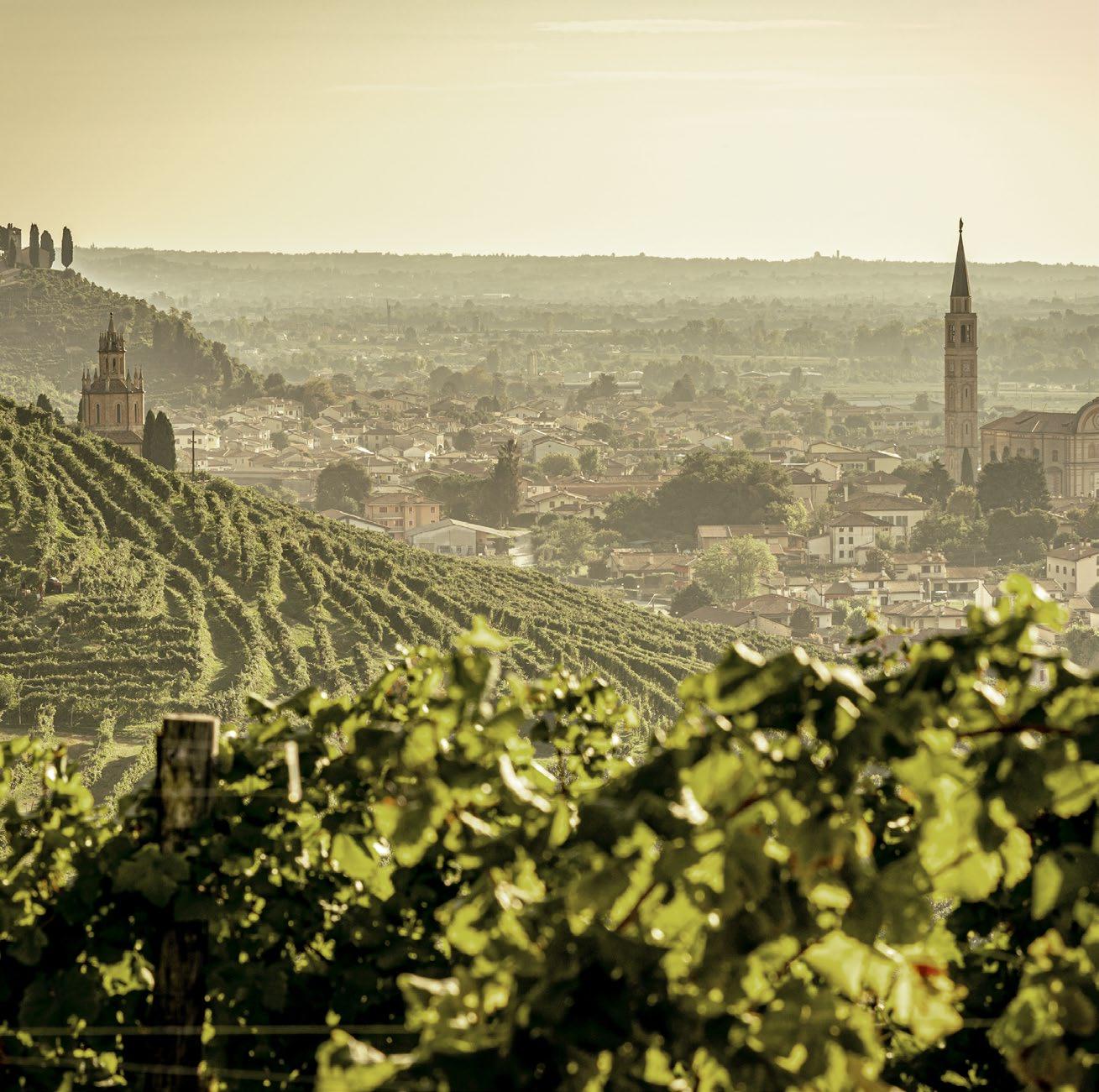




www.merotto.it
1. An image of the grape harvest among the rows of Paolo Speri
2. The cellar led by Francesco Quintarelli: the large wooden barrel dedicated to his grandfather Giuseppe with peacocks and a cross symbolising work and religion; it is positioned next to the other dedicated to his grandmother Franca, adorned with the incision of her four daughters, symbol of prosperity
3. The prestigious Villa della Torre in Fumane, recovered thanks to the vision of Marilisa Allegrini
In the opening the cellar and the vineyards of Albino Armani
3 of beauty burns. Equally enchanting are the peristyle and the fishpond, spaces returned to life and today active with hospitality and dining services. «Wine, landscape, history, art and culture live as a total bond. And as my bottle of the heart, at the centre of the table I would bring La Poja,» a cru from Corvina in purity with cherry scent and «deep, velvety tannins, which I see very well next to a duck with or ange or aged Vezzena cheese,» but let's also make note of the gnocchi with fioretta, alpine butter and a sprinkling of smoked ricotta.
HUMANITY AND BIODIVERSITY
The slopes that "baptised" Albino Armani were instead in the Adige Valley, where the family embraced viticulture since the year 1600 and where he learned «what life was and what the grape vine was.» Arriving in Valpolicella was «a natural consequence,» the respect and shyness with which he approached
ADDRESSES
Lodging amid vineyards and olive groves
Dimora Buglioni Wine Relais
Verona – via Cariano, 24 0456895192 – dimorabuglioni.it
Agriturismo Casa Zen Mezzane di Sotto (VR) via A. De Gasperi (ex via Gugi), 40 3469759090 –agriturismocasazen.it
Corte Sant’Alda Mezzane di Sotto (VR) – via Ca’ Fioi, 1 0458880006 – cortesantalda.com
Locanda dell’Oleificio Mezzane di Sotto (VR) – piazza Unità d’Italia, 9 3891739009 – locandadelloleificio.it
Massimago Cantina & Wine Relais Mezzane di Sotto (VR) – via Giare, 11 3426604566 – massimago.com
Azienda Agricola Villa Spinosa Negrar di Valpolicella (VR) via Jago dall’Ora, 14 0457500093 – villaspinosa.it
Cantina Roberto Mazzi & Figli Negrar di Valpolicella (VR) – via Crosetta, 8 0457502072 – robertomazzi.com
Masi Foresteria Serego Alighieri Sant’Ambrogio di Valpolicella (VR) fraz. Gargagnago – via Giare, 27 0457703622 – seregoalighieri.it
Tenuta Le Cave Tregnago (VR) – via Pagnaghe, 5 0454854559 – tenutalecave.com
Villa Quaranta Tommasi Wine
Ospedaletto (VR) – via Ospedaletto, 57 0456767300 – villaquaranta.com
Villa Allegri Cantina Zanotti Negrar di Valpolicella (VR) – via Cengio, 6 0455868312 – villaallegri.com
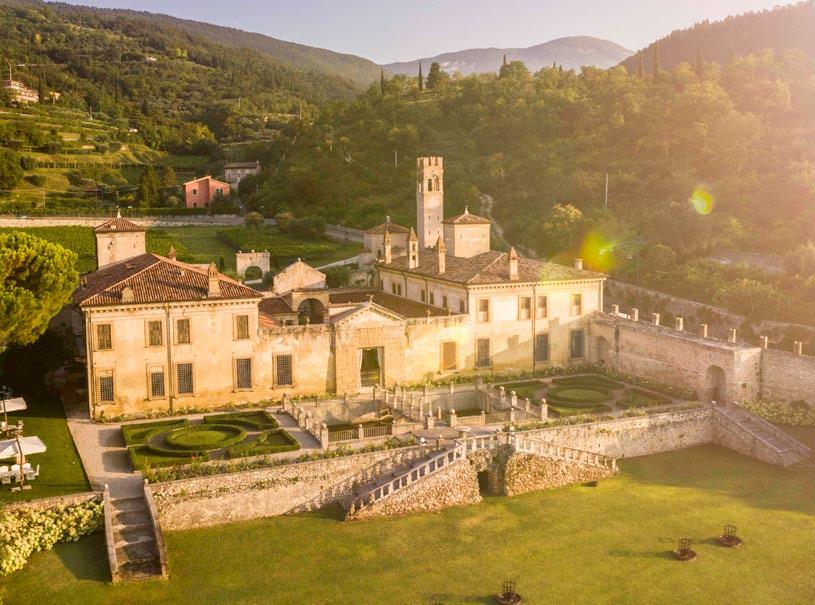
Villa Cordevigo Wine Relais Cavaion Veronese (VR) – località Cordevigo, 1 045723 5287 – villacordevigo.com
Villa della Torre
Fumane (VR) – via della Torre 25 0456832070 - villadellatorre.it
Wine Relais Corte Cariano San Pietro in Cariano (VR) –via Cariano, 10 0457701118 – cortecariano.com
Menegazzi
67GAMBERO ROSSO VALPOLICELLA SEPTEMBER-OCTOBER 2O22
Foodshops Caseificio
ADDRESSES
TRENTINO
Brentonico
Where to eat Lodging amid vineyards
LOMBARDIA
Pieve
Navene San Giacomo
and olive grows
Foodshops Wineries
LagodiGarda Bardolino
Assenza
Roeno
Castelletto
Ca' La Bionda
Enoteca della Valpolicella
Monte Zovo Famiglia Cottini Guerrieri Rizzardi
Torri del Benaco
Villa della Torre Allegrini
Foresteria Serego Alighieri
La Divina
Villa Cordevigo Wine Relais
Villa Quaranta Tommasi Wine
Dimora Buglioni Wine Relais
Wine Relais Corte Cariano
Peschiera del Garda
LOMBARDIA
TRENTINO
Caseificio Menegazzi
Caseificio Morandini
Sant’Anna d’Alfaedo
Caseificio Gardoni Caseificio Achille
Erbezzo
Caseificio Giulia
Quintarelli
Lugo
Negrar di Valpolicella
Grezzana
Bertani
Casearia Albi Caseificio Artigiano Dario Gugole
Corte Rugolin Tedeschi
Monte dall'Ora
Begali
Villafranca di Verona
Settimo Cielo
Tommasi Viticoltori
Azienda Agricola Villa Spinosa
LOMBARDIA
Recoaro Terme
Valdagno
La Casara Roncolato Romano
Cantina Roberto Mazzi & Figli
Tenuta Le Cave
La Cru di Villa Balis Crema
VERONA Cadidavid
VivianiMasi Brigaldara
I Campi Pasqua
Mezzane
San Marino Buonalbergo
Raldon
Buttapietra
Sapor'è Pizza Baker y
68GAMBERO ROSSO STORIES SEPTEMBER-OCTOBER 2O22 Amistà di Byblos Art Hotel Villa Amistà
Limone sul Garda Fiumane Lo
Renato Bosco Pizzeria
Montecchia di Crosara
Corte Verzè Al Callianino
Massimago Cantina & Wine Relais
Corte Sant’Alda Locanda dell’Oleificio
La Torre
Sant'Antonio
Agriturismo Casa Zen
San Giovanni Ilarione Cellore Arcole Albaredo d’Adige Isola Rizza
Veneto 5 km
Villa Allegri Cantina Zanotti
ENANTIO, RABBIT AND POLENTA IN THE LAND OF THE FORTS
iLocated in Belluno Veronese, in Brentino Belluno which is a borderland between the provinces of Verona and Trento. Set on the banks of the Adige river, between Monte Baldo and the Lessinia plateau, it is here that the Doc Terradeiforti takes its name from the numerous Austro-Hungarian fortifications and protects native varieties such as Enantio (formerly En antyum in the writings of Pliny the Elder) and Casetta, two black berried grapes to which Pinot Grigio was later added. Particular features of the area are entire pied franc vineyards, with vines of over 150 years that have re sisted phylloxera thanks to sandy soils, rich in silicon, adjacent to the banks of the Adige. We live in a green setting, surrounded by nature, which offers bike paths and hiking trails, mountain excursions, as well as the castle of Avio and the easily reachable Madonna della Corona sanctuary. The local cuisine is also very interesting, a genuine, rural proposal, with typical fea tures of Trentino and the upper Veronese. In our inn we still prepare rabbit with polenta from an old recipe of grandmother Giuliana, fresh pasta is made daily. We find the Enantio in the dough of the tagliatelle with radic chio and speck as well as in the typical pork legs aged brined with this wine. This is an important red that at the table pairs well with venison and polenta, or a nice plate of cheeses from Lessinia and Monte Baldo, while the Pinot grigio Rivoli goes well with pasta courses such as tortelloni stuffed with cheese and topped with tomato.
– Cristina Fugatti , Cantina Roeno, inn and agriturismo farmhouse

the territory could already be read in the structure dug on the heights of Ma rano, merged in tracing the shape of the hill. «It was once rich in cherry trees, a lo cal specialty at risk of extinction» as told by his son Federico, who was born here and returned after experiences in other areas. The idea of biodiversity brings to gether people and territory, «giving more importance to the vineyard than to other production processes. We are looking for a more humane Amarone, which maintains the acidity and crispness typical of Corvina, because at the table we would like to bring it back to pair pasta courses or cheeses that are not necessarily too aged.»
Before aiming for the cheeses, let's check out two unmissable places recommend ed by winemakers: the Sanctuary of San ta Maria Valverde, on Mount Castellon, with a magnificent view over the Mara no valley; and San Giorgio di Valpolicel
la known as the "deceiver of lazybones" walking towards it, uphill, it feels like one can never reach the desired summit.
THE PASTURES OF LESSINIA
With the appropriate means, it is easy to reach the historic site of Ca' Verde, never a more appropriate name, a structure im mersed in the woods of Sant’Ambrogio that today offers dining and accommoda tion, while since 2016 the dairy has been moved to Vallese. Here you can breathe the collective history of a cooperative founded on March 8, 1978 (an inter esting variety of wines is also produced under the Ottomarzo brand), for which fifteen members still raise goats and cows in the pastures of Lessinia. «Each one is rewarded for the quality of their milk - as Doriana Lucchese and Luciano Pozzerle tell us - the stables have obtained hay-grade milk certification
Erbezzo (VR) – via Corte Bernardi, 12 0457075008 – caseificiomenegazzi.com

Caseificio Morandini Erbezzo (VR) – via Dosso, 1 0457075050





fCaseificio Morandini Erbezzo
Caseificio Gardoni Roverè Veronese (VR) – via Gardun, 7 0457835917



Caseificio Achille Velo Veronese (VR) – loc. Stander, 1 0457835549 – caseificiodallavalentina. com
Casearia Albi Velo Veronese (VR) – via Verde, 9 0457835579 – albifamily.it
Caseificio Giulia Sant'Anna d'Alfaedo (VR) piazza G.A. Dalla Bona, 4 – 0457532575
Caseificio Artigiano Dario Gugole S. Giovanni Ilarione (VR) – via Cotto, 44 0456550285 –
La Casara Roncolato Romano Roncà (VR) – via Nuova, 1 0457460052 – it.lacasara.com
Where to eat
Corte Verzè
Cazzano di Tramigna (VR) – loc. Cambran, 5 0457820855 – corteverze.it
Enoteca della Valpolicella
Fumane (VR) – via Osan, 45 0456839145 – enotecadellavalpolicella. it
La Cru di Villa Balis Crema Grezzane (VR) fraz. Romagnano – via Cortivi, 11 0454951629 – ristorantelacru.it
La Torre
Mezzane di Sotto (VR) – p.zza IV Novembre, 23 0458880145 – trattorialatorre.it
Al Callianino
Montecchia di Crosara (VR) – loc. Pergola via Adige, 46 – 0456175906
Settimo Cielo
Pescantina (VR) – via E. Bernardi, 1 0456703207 – pizzeriasettimocielo.net
Renato Bosco Pizzeria
San Martino Buon Albergo (VR) p.zza del Popolo, 46 3319873375 – boscorenato.it
Sapor'è Pizza Bakery San Martino Buon Albergo (VR) via Ponte, 55a – 0458781791 –boscorenato.it
Amistà di Byblos Art Hotel Villa Amistà
San Pietro in Cariano (VR) fraz. Corrubbio di Negarine – via Cedrare, 78 0456855583 – ristoranteamista.it
69GAMBERO ROSSO VALPOLICELLA SEPTEMBER-OCTOBER 2O22

FM 333: THREE TIMES PERFECT. Discover more!
and microbial rennet is mostly used» in an ante-litteram organic context. Producing cheeses that span from robiola to pri mosale, from the very tasty yoghourt to the beautiful variety of goat cheese (also scamorza smoked with beech wood), up to the flavoured cheeses «like the Mediter raneo, a cow's milk cheese strewn with rock et and about twenty selected herbs from our mountains.»
THE ALTITUDE PASTURES
Climbing up to the Croce dello Schioppo cross in Sant’Anna d’Alfaedo, we walk on the border between Valpolicella and Les sinia, entering the incredible universe created by Corrado Benedetti. His father raised pigs and produced cured meats, his mother descended from a cheese maker; the inn they inaugurated was the opening of the circle that Cor rado will close when «we will finish the new restaurant, offering simple dishes, a
mirror of the territory.» In the middle is his prolific activity as a creator of cured meats and cheese affineur, products that are already excellent to look at: cow's milk cheeses aged in Amarone; blues spiked with gin, chocolate, whiskey; the typical soppressa and carne salà salted meat, lard and pancetta but also speck, due to «the inevitable influence of nearby Trentino.» Corrado's passion transpires from every detail, «you have to be there, experience every step first hand and touch the butt of the salami, as they say in local jargon. This is a beautiful game for me and I would like to see my same enthusiasm in young people, but it looks like the vaunted crisis is above all in their heads.» The shop is museum-worthy and in the workshops (the production of mustards, jellies, paté is also growing) tradition meets technol ogy in the name of efficiency. And out there the brilliant space of Bosco Al legro opens up, with gazebos for those
who want to have a barbecue with Cor rado Benedetti products, including bars, entertainment and initiatives to get to gether and enjoy the fresh air of these mountains.

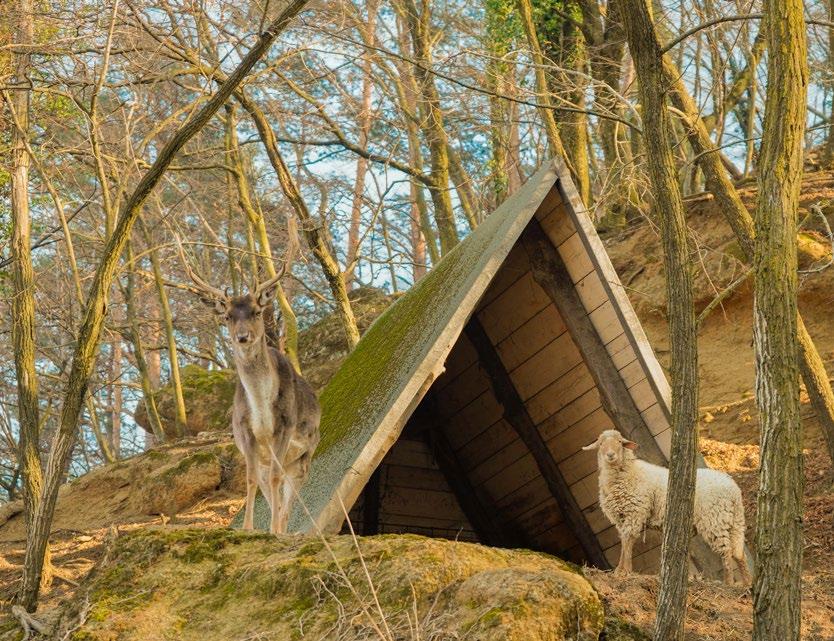
THE EXTRA VIRGIN OLIVE OIL
The supply chain of some products links Benedetti to another historical reality in the area, so we move to Valpantena where the Salvagno olive press began its work in 1923 to produce EVOO oil, «while previously the most widespread cul ture relied on butter,» as Francesca Sal vagno recalls, with her sister Cristina, the third generation of oil-milling art. The olive oil of the area is balanced, ver satile, «pleasant, unobtrusive, it pairs very well with meat, vegetables and fish dishes such as trout Garda-style,» while from the Grignano variety alone, Col Zaccaria olive oil is obtained, round with herbaceous and balanced intensity.
5 71GAMBERO ROSSO VALPOLICELLA SEPTEMBER-OCTOBER 2O22
6

Staying on the subject, in Grezzana is the headquarters of Redoro, whose history started in 1895 and today is led by Dan iele Salvagno (a very common surname in the area). «This is a land of millenary olive trees, even if the evolution took place in the 1980s, looking for a finer extra virgin olive oil than what was sold in demijohns.» Daniele entered the 1990s with his load of energy and with «700 olive growers who began to sell their olives to the mill, which transforms and sells bottled oil. It is a rev olution.» The PDO arrived in 2000 and Redoro believes in it, as it believes in organic. There are two cultivars at stake, «the Grignano which produces large olives, with great richness of aromas in the first months, while the Favarol is smaller, splen dor of elegance and long-lived in its generos ity.» Perfect in pairings, they offer a fresh, persistent olive oil that's «easy game for chefs: it knows how to enhance sushi but
MONTE VERONESE, “CRU” OF LESSINIA HUMAN-SCALE CHEESE
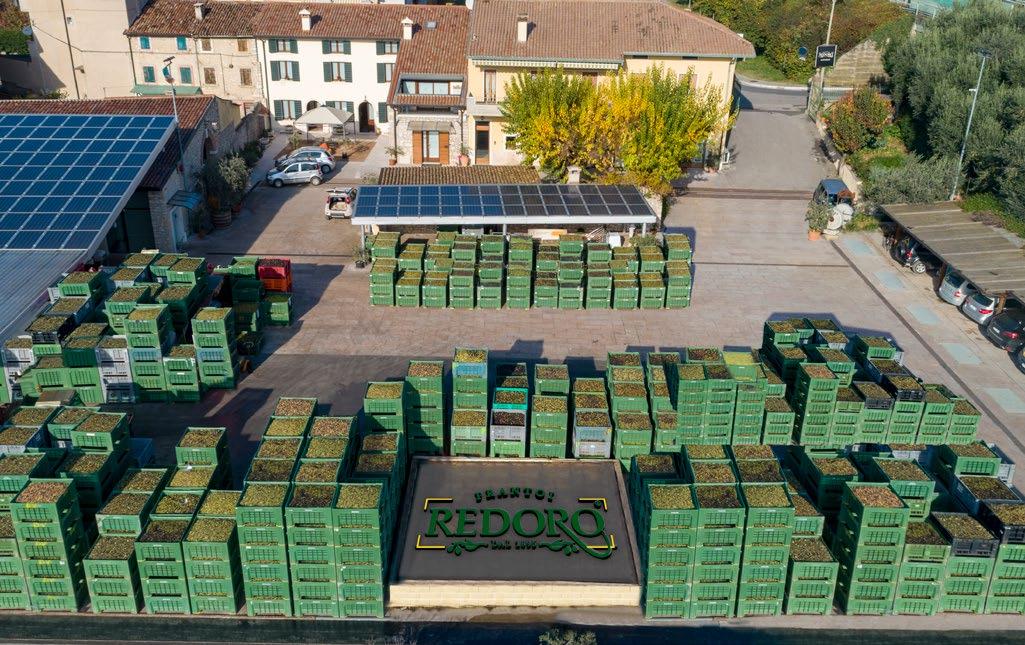
Monte Veronese owes its DOP to its being historic, having been produced since the year 1000 and in the past it was also used as a bargaining chip. The name derives from the dialect "monta," which means milking, in the plural "monte" considering both morning and evening milk is used to produce it. There are two main types, Whole Milk which is fresher and D'Allevo declined in three ages, Mezzano, Vecchio and Malga, for a different flavour evolution. It is still produced in an artisanal way, the hands and knowledge of man are fundamen tal, and refers to a small area identifiable with Lessinia, so it is as if we were talking about a cru: narrow borders and a lot of pasture, only mountain milk, stables at over 600 metres above sea level for eight producers that I call "the families of Monte Veronese," as they are truly family-run dairies. In the tradition of Veronese cuisine it is used for risotto with Amarone, in the mountains it garnishes the "sbatui" gnocchi of Lessinia, in Valeggio sul Mincio it's in the filling of tortellini, while the fresh version is excellent melted, tastier than mozzarella and perfect for pizzas and focaccias. Speaking of wine, I would very well see a Chiaretto di Bar dolino with Monte Veronese Whole Milk, the mineral notes of Soave with the Mezzano, while Vecchio and Malga ask for more full-bodied reds, like Ripasso and Amarone della Valpolicella. .
– Paola Giagulli, Director of the Monte Veronese Dop Consortium

72GAMBERO ROSSO STORIES SEPTEMBER-OCTOBER 2O22
anni in legno pregiato
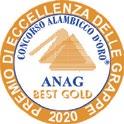 esclusiva grappa riserva
esclusiva grappa riserva

10 100 distillerianegroni.com
L’esclusività della Grappa Riserva 10 anni è unica e inconfondibile. Nata in occasione dei 100 anni di attività della Distilleria Negroni profuma di lentezza, di storia, di dedizione, una pregiata qualità senza tempo.
anni di tradizione veneta
1


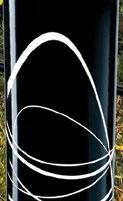



also a pasta course with truffles or burrata with tomatoes.» And under the Redoro brand there's also excellent tuna packed in glass, freshly caught by a cooperative in the sea off Santander. The structure of the oil mill is impressive with their vastness and technology, the remarkable production does not lose the thread of quality and next to the second location in Mezzane the Locanda dell'Oleificio also opened, where you can stay overnight and try their products (including wine) on the table.
CLEAN AGRICULTURE
Looking to the east, diving into the east ern front of the "enlarged" Valpolicel la, on hills with little human presence, there's great charm and vocation, as demonstrated by the success of wineries such as Dal Forno, Tenuta Sant’Anto nio, Fasoli Gino. It is precisely by collab orating with Gino that the TASI reality of Matteo Fasoli, Mattia Cristofoli and
Michele Zorzi gained strength on the hills of Tregnago, with Garganega wines and classic Valpolicella wines that aim for drinkability, versatility, freshness in the name of «clean agriculture, healthy, pushed beyond the organic with its regen erative practices.» Francesca Ambrosini tells us about it. Since 2017 she has joined the company for what concerns the Le Cave estate, which has a splendid view of the Illasi valley and is surrounded by those magnificent vineyards. Once a place of extraction surrounded by cherry trees, today it offers elegant rooms with architecture and furnishings inspired by the territory «in the fusion of wood, iron, Lessinia stone, art». The restaurant is en trusted to Mattia Meneghello («chef with heart and passion») who looks to very refined comfort food, the search for excellent ingredients and «the challenge of tradition in change, to bring out the true identity of Valpolicella.» This can be an ex cellent base to start the journey.

4. Corrado Benedetti's goats, in his Bosco Allegro on the border between Valpolicella and Lessinia
5. An old muller outside the frantoio of Francesca and Cristina Salvagno
6. The headquarters in Grezzana di Redoro, a historic company dedicated to producing extra virgin olive oil: founded in 1895 and run today by Daniele Salvagno
7. A suggestive glimpse of the rows of the Le Cave estate led by Francesca Ambrosini

8. A label from the Tasi winery, by Matteo Fasoli, Mattia Cristofoli and Michele Zorzi

7 8
75GAMBERO ROSSO VALPOLICELLA SEPTEMBER-OCTOBER 2O22
ENRICO MARMO
BORN IN Canelli (AT)
RESTAURANT NAME Balzi Rossi
RESTAURANT CONTACTS: Ventimiglia (IM) via Balzi Rossi, 2 0184 38132 ristorantebalzirossi.it
SOUS CHEF Jacopo Rosti & Mckay Wilday AGE OF SOUS CHEF 28 e 30
KITCHEN BRIGADE Jacopo Rosti Mckay Wilday Simone Ramezzana Federica Mazzocchetti
IN THE DINING ROOM Eleonora Revello Silvia Meloni Maura Albanese
SOMMELIER Giuliano Revello
LATEST ALBUM DOWNLOADED Medicine at Midnight by Foo Fighters
LATEST BOOK READ The Storyteller: Tales of Life and Music by Dave Grohl
AGE 35
OWNER
PARTNER EMPLOYEE
SEATS 30
BEST LOVED INGREDIENT Dandelion, and wild herbs in general
LEAST LOVED INGREDIENT None
THE DISH OF A LIFETIME Crepinette with leaves and wild herbs at Retrobottega (Rome)
GRAND MAESTRO WORSHIPPED Alain Passard
MOST ESTEEMED COLLEAGUE Giuliano Sperandio chef at Le Taillevent (Paris)
RESIDENT IN Ventimiglia (IM)
PREVIOUSLY EMPLOYED AT Cracco in Milano All'Enoteca in Canale (CN) Contrada di Castel Monastero in Castelnuovo Berardenga (SI) Osteria Arborina in La Morra (CN)
THE HASHTAGS OF MY CUISINE Instinctive, natural, green, seasonal, tasty, essential, dynamic, acidic, sunny, emotional
FAVOURITE RESTAURANT ABROAD Not one in particular ONE WINE ABOVE ALL OTHERS Champagne Grand Cru Terroirs Champagne Grand Cru Terroirs by Agrapart & Fils
HAD I NOT BEEN A CHEF... Pizzaiolo
DISHES: Cappun magro vegetale Risone allo scoglio Coniglio alla ligure Unexpected chocolate
by Clara Barra – photos by Chiara Schiaratura
SEPTEMBER-OCTOBER 202276GAMBERO ROSSO RECIPES
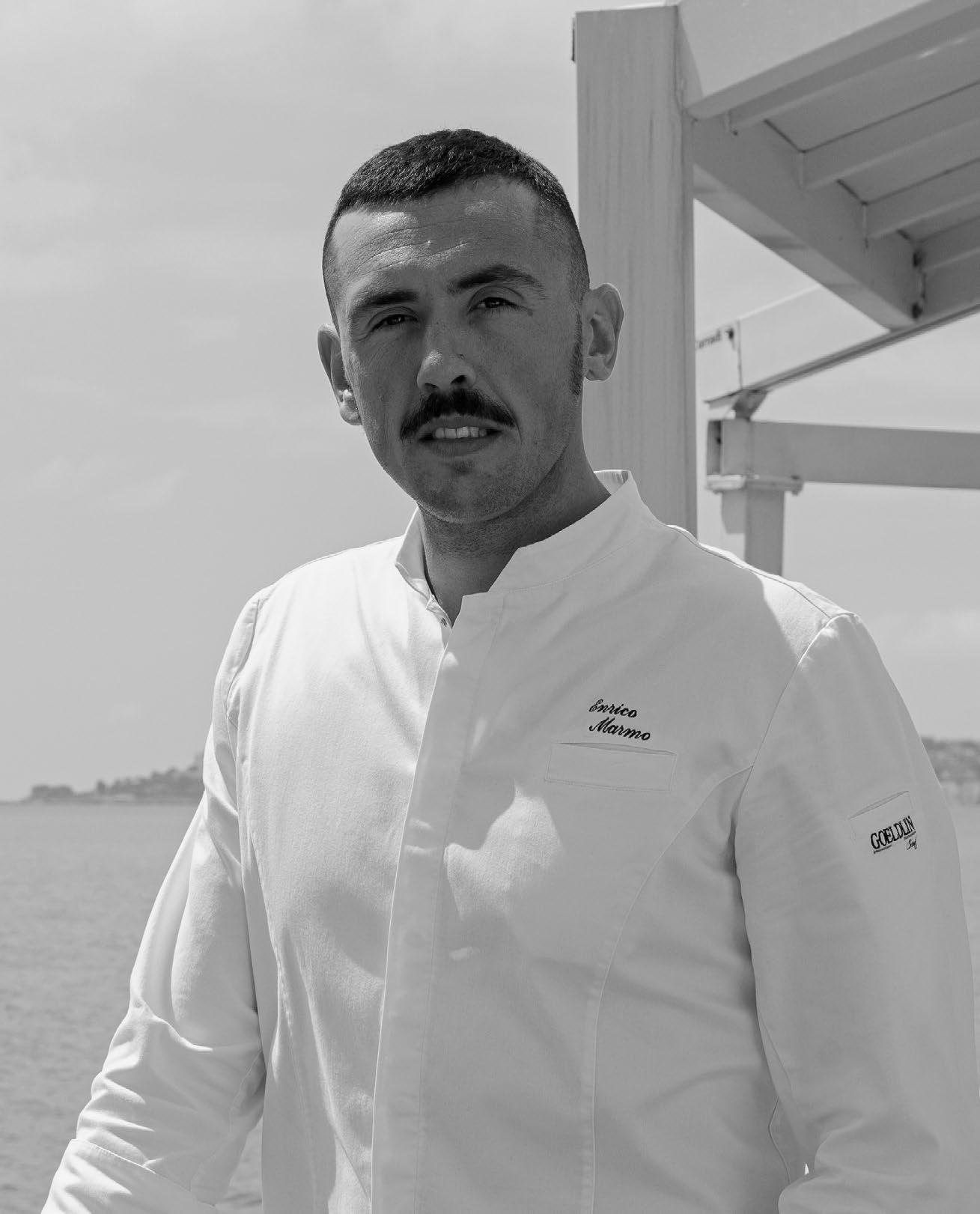 ENRICO MARMO
ENRICO MARMO
SEPTEMBER-OCTOBER 202277GAMBERO ROSSO
Cappun magro vegetale
ingredients for 4
For the vegetable roll
200 g russet potatoes, peeled 200 g light zucchini
200 g carrots
200 g yellow carrots
200 g Swiss chard leaves 100 g green beans
For the salsa verde
100 g parsley
100 g gluten-free bread crumb 100 g extra virgin olive oil from Liguria
100 g red wine vinegar
15 g salted anchovies
15 g pine nuts
10 g capers
2 g garlic
1 hard boiled egg
For the beetroot sauce
200 g beetroot
100 g water
100 g red wine vinegar 20 g sugar
5 g salt
For the iodized sauce
200 g water 100 g laver (aka sea lettuce) 100 g glasswort 50 g extra virgin olive oil from Liguria
25 g pickled sea fennel 10 g lemon zest
For the biscuit
100 g rice flour 50 g cornstarch 50 g water 50 g extra virgin olive oil from Liguria
2 g salt red wine vinegar chervil raw iodized herbs
For the roll, wash and clean the vegetables. With the help of a circular mandoline, cre ate sheets of potatoes, car rots and courgettes. Blanch the chard leaves and green beans in plenty of boiling salted water, cool and dry them well. Spread a layer of cling film on the work sur face, layer the ingredients in the centre starting from the potatoes, followed by the carrots, the chard leaves, the yellow carrots, the courgettes and finally the green beans. Roll up the vegetables, taking care to leave the green beans in the center. Refrigerate for 1 hour, then steam at 98°C for 55 minutes.
For the salsa verde, blend all the ingredients in a food pro cessor until evenly pureed. Keep in the fridge.
For the beetroot sauce, blend all the ingredients together, strain and reduce over medi um heat to the right density.
For the iodized sauce, blend all the ingredients together, filter and set aside.
For the biscuit, combine all the ingredients, then roll out the dough 3 mm thin and bake in the oven at 160°C for 12 minutes.
For each plate, cut a 3 cm slice of the vegetable roll, sea son with the iodized sauce, lay the broken biscuit into 5 mm pieces soaked in red wine vinegar, raw iodized herbs and chervil on top. Fin ish with a few dots of beet root sauce and finish with the salsa verde..

SEPTEMBER-OCTOBER 202278GAMBERO ROSSO RECIPES
UN RITORNO AL PASSATO PER REINVENTARE IL PRESENTE

UNO SPUMANTE BRUT MILLESIMATO CHE VA OLTRE IL TEMPO E LE CONVENZIONI UNENDO L’ELEGANZA DELLO CHARDONNAY ALLA FRESCA DINAMICITÀ DELLA GLERA. UN’EDIZIONE LIMITATA ‘VINTAGE’ CHE CELEBRA LA 40° VENDEMMIA DI CUVÉE DI BOJ.
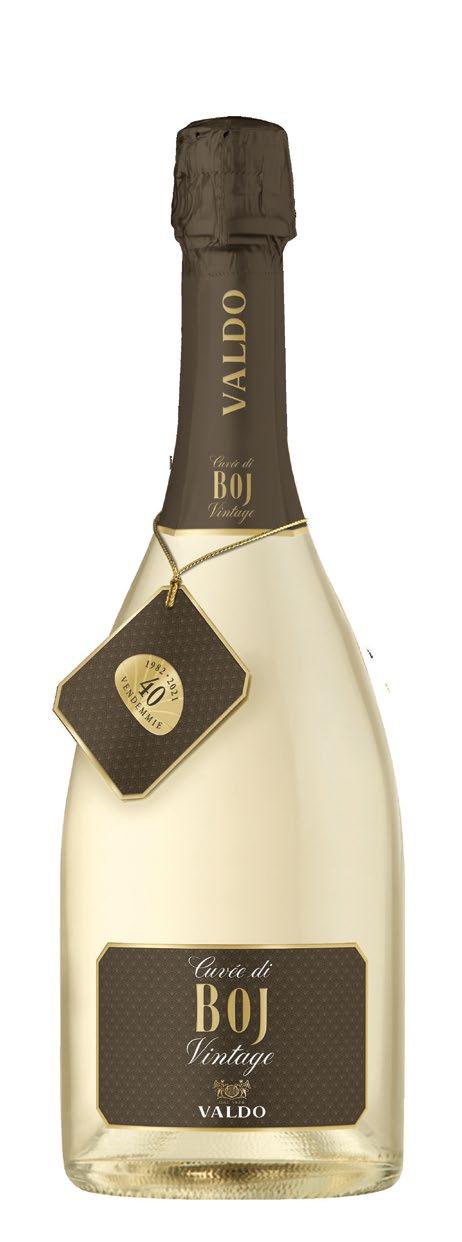
The advanced logistic solution for Wines & Spirits


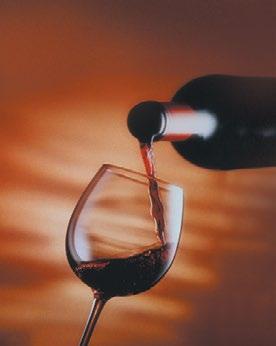
Wine & Spirits Logistic Macrosystem Solution is a logistics package designed specifically for the beverages industry. Giorgio Gori has achieved truly superlative standards in this sector in terms of expertise, partnerships, resources, organization and technology. Secure, modular transport systems, contracts with the most dependable carriers, excellent transport rates and optimum storage conditions will smooth the way for your products, from the bottling line to the consumer’s table. Easily accessible web-enabled options combined with effective monitoring and forecasting instruments can provide real time information on the entire logistics process.
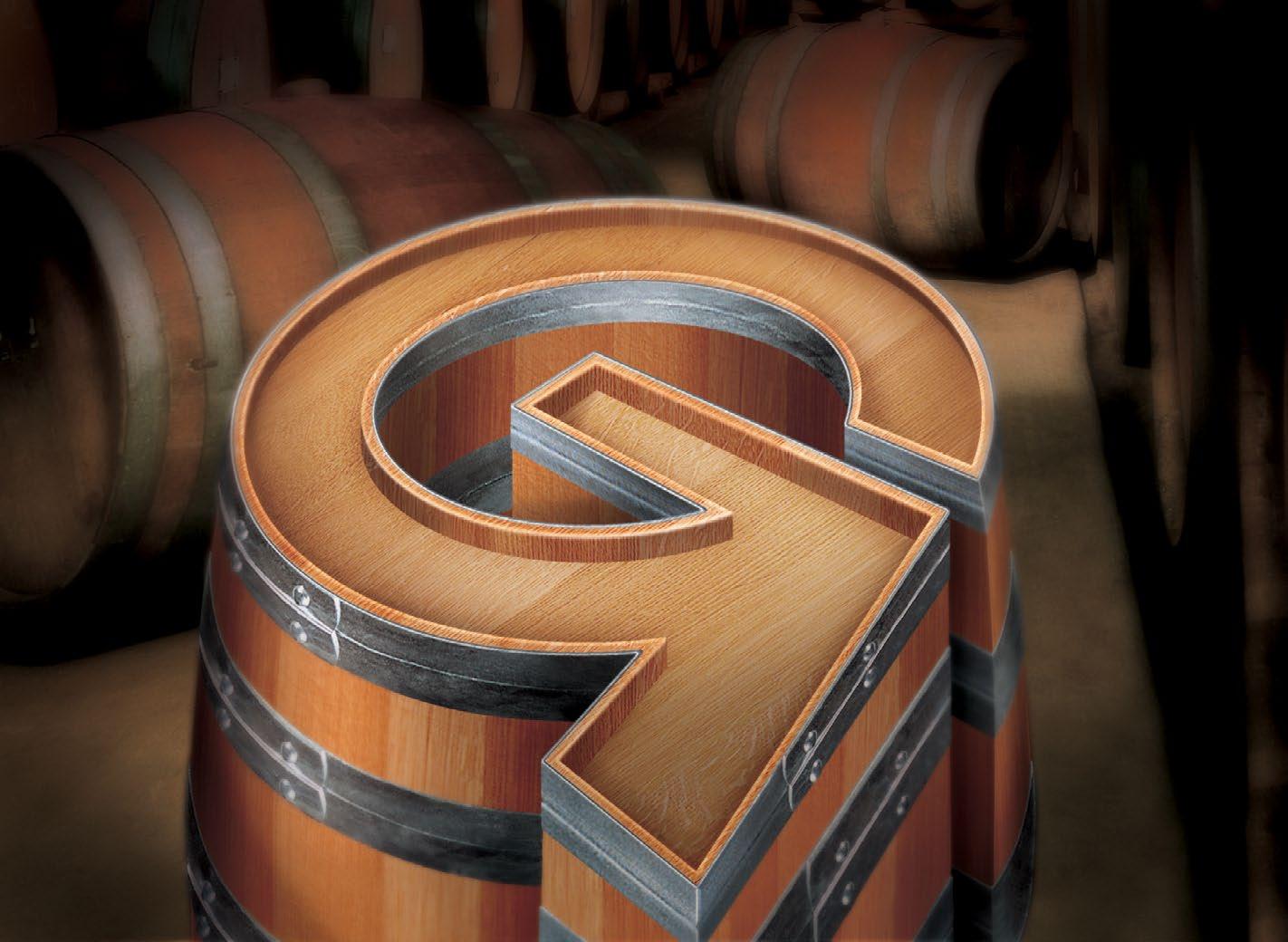
www2.ggori.com
Risone allo scoglio
ingredients for 4
For the fish soup reduction
2 kg assorted fish soup catch (weever, redfish, occhioni, priest fish, horse mackerel...)
50 g golden onion
50 g white wine

50 g triple concentrated tomato paste
For the moscardini ragout
200 g moscardini
50 g triple concentrated tomato paste
50 g extra virgin olive oil from taggiasca olives
20 g golden onion water salt
200 g risone made from Gentile semolina
20 g marinara sauce powder
For the fish soup extraction, sauté the chopped onion and tomato paste in a copper saucepan with a diameter of 24 cm for 5 minutes, then deglaze the pan with the wine. Once evaporated, turn off the heat and place the onion mixture in a vacuum bag. Scale, gut and fillet the fish, add the carcasses to the onion in the bag and seal. Cook at 80°C for 8 hours, filter and keep warm.
For the moscardini ragout, sauté the chopped onion and tomato paste for 5 minutes with olive oil and salt, then add the cleaned moscardini, cover with water and cook for 35 minutes. Once cooked, blend the moscardini through a meat grinder and keep them warm, filter the cooking liquid and put it in the freezer.
Cook the risone like you would risotto, wetting with the fish soup extraction when necessary. After 6 minutes of cooking, add the ground moscardini, then let it rest for 1 minute and then stir in the ragout.
On the base of each dish, heated to 75°C, place the fish fillets in slices sea soned with olive oil and salt, cover with the risone and finish with marinara sauce powder.

SEPTEMBER-OCTOBER 202281GAMBERO ROSSO ENRICO MARMO
Coniglio alla ligure
ingredients for 4
For the marinated rabbit legs
4 rabbit legs
500 g Vermentino wine from Li guria
80 g coarse sea salt
50 g sugar
20 g di black Sarawak pepper
For the rabbit stock
2 l cold water
100 g golden onion, minced
1 g Vessalico garlic
Vermentino wine from Liguria
extra virgin olive oil from Liguria salt
50 g aromatic wild mesclun sa lad (dandelion, wild garlic flo wers, rocket, lemon balm, tarra gon, etc.)
30 g dried taggiasca olives
30 g Liguria lemon paste
20 g pine nuts from Liguria, to asted butter
extra virgin olive oil from taggia sca olives
For the rabbit, bone the thighs, keeping the bones aside. Prepare the marinade by mixing all the ingredients, then put the legs in it for 24 hours, drain and dry them well with a cloth.
For the rabbit stock, in a copper saucepan with a diame ter of 24 cm, toast the bones with a little olive oil and salt. When they are slightly browned, deglaze with the wine, once evaporated, add the onion and garlic, cover with cold water and bake at 170°C for 2 hours. After the coo king time, filter with an etamine and reduce very slowly.
In a Lyonnaise pan, brown the rabbit legs with oil and butter. When they become hazelnut-colour, remove from the heat and rest on a grill at 60°C.
At the base of each dish spread the lemon paste, add 7/8 pine nuts and olives. Scallop the rabbit legs and place one in each plate, glaze with the stock and finish with the wild mesclun salad.

SEPTEMBER-OCTOBER 202282GAMBERO ROSSO RECIPES
Unexpected chocolate
ingredients for 4
For the mousse
400 g Chuno Ecuador 78%
chocolate
190 g aquafaba
150 g soy milk
15 g icing sugar
2 g xantana
For the brittle
100 g gluten-free salt-free crackers
50 g Chuno cacao grue
50 g Chuno Ecuador 78%
chocolate
For the taggiasca olive powder
100 g dehydrated taggiasca olives
60 g maltodextrin
For the chocolate water
100 g water at 80°C
50 g Chuno cacao grue
2 g xantan
extra virgin olive oil from taggiasca olives
For the mousse, whisk the aquafaba with the icing sugar and xanthan in a stand mixer for 12 minutes. Melt the choc olate in a double boiler, then add the soy milk at 50°C. Gen tly combine the two compounds, then spread between two sheets of baking paper and blast chill for 2 hours at –36°C.
For the brittle, blend the crackers and cocoa nibs in a food processor for 2 minutes, then add the melted chocolate at 50°C. Spread the mixture between two sheets of baking pa per and blast chill at –36°C for 30 minutes.
For the Taggiasca olive powder, blend the ingredients in a food processor at maximum speed for 30 seconds. Sift and store in the freezer at –18°C.
For the chocolate water, combine the ingredients, let the mixture rest for 30 minutes, then blend and filter.
At the base of each dish, arrange an irregular rectangle of mousse and sprinkle with the Taggiasca olive powder. Add 2 triangles of brittle and 4 dots of chocolate water on the sides. Complete with a drizzle of olive oil.
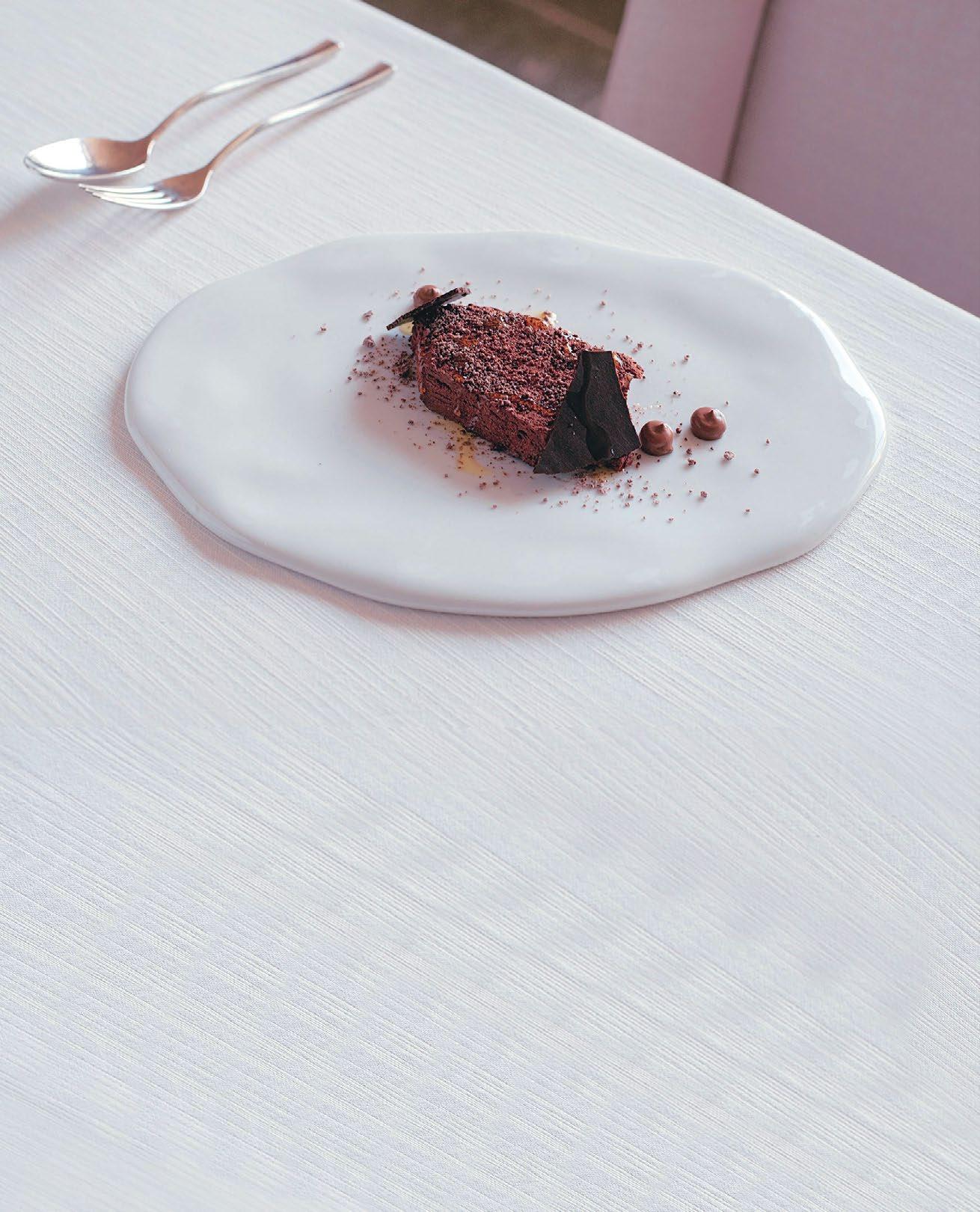
SEPTEMBER-OCTOBER 202283GAMBERO ROSSO ENRICO MARMO
GAMBERO ROSSO www.gamberorosso.it
SENIOR EDITOR
Lorenzo Ruggeri
PHOTO EDITOR Rossella Fantina LAYOUT

Chiara Buosi, Maria Victoria Santiago
CONTRIBUTORS
Clara Barra, Francesca Ciancio, Giuseppe Carrus, Gianni Fabrizio, Emiliano Gucci, Valeria Maffei, Paola Mencarelli, Marco Sabellico
PHOTOGRAPHS AND DRAWINGS
Patrizia Casamirra (cover), Mario Didier, Alessandro Naldi, Chiara Schiaratura
GR USA CORP PUBLISHER & PRESIDENT Paolo Cuccia
Advertising Class Pubblicità SpA Milano, Via Marco Burigozzo, 5 - tel. 02 58219522
For commercial enquiries: kanchieri@class.it
Advertising director Paola Persi
email: ufficio.pubblicita@gamberorosso.it
Gambero Rosso and are registered trademarks belonging to Gambero Rosso S.p.A. GAMBERO ROSSO is a Registered Trademark used under license by GR USA CORP
Copyright by GAMBERO ROSSO S.P.A. 2022. All rights reserved. Nothing may be reprinted in whole or in part without written permission from the publisher.
GR USA CORP is not responsible for loss, damage, or any other injury as to unsolicited manuscripts, unsolicited artwork or any other unsolicited materials. september-october 2022
a www.gamberorossointernational.com ✉ international@gamberorosso.it
f GamberoRossoInternational










































 SEASONAL COCKTAIL by Paola Mencarelli
Simone Rossi, Beverage Manager DarkSide at Rosewood Hong Kong
SEASONAL COCKTAIL by Paola Mencarelli
SEASONAL COCKTAIL by Paola Mencarelli
Simone Rossi, Beverage Manager DarkSide at Rosewood Hong Kong
SEASONAL COCKTAIL by Paola Mencarelli









 by Marco Sabellico, Gianni Fabrizio, Giuseppe Carrus
by Marco Sabellico, Gianni Fabrizio, Giuseppe Carrus









 words by Valeria Maffei – photos by Patrizia Casamirra
words by Valeria Maffei – photos by Patrizia Casamirra



 Giuseppe Vaccarini , sommelier
Giuseppe Vaccarini , sommelier




























 Enrico Panzarasa, cheese selector
Enrico Panzarasa, cheese selector



























































 words by Francesca Ciancio - photos by Mario Didier
words by Francesca Ciancio - photos by Mario Didier







 o
Ticino Guallina Trattoria
Locanda Vecchia Pavia al Mulino
RC Resort
I Castagni
Antico Forno Collivasone
La Corte dell’Oca
Salumeria Nicolino
Milano Pavia
Vigevano Mortara
Novara Magenta PIEMONTE LOMBARDIA
PIEMONTE
8 km
mangiare foodshop
LOMELLINA
STORIES
o
Ticino Guallina Trattoria
Locanda Vecchia Pavia al Mulino
RC Resort
I Castagni
Antico Forno Collivasone
La Corte dell’Oca
Salumeria Nicolino
Milano Pavia
Vigevano Mortara
Novara Magenta PIEMONTE LOMBARDIA
PIEMONTE
8 km
mangiare foodshop
LOMELLINA
STORIES
































 words by Emiliano Gucci - infographics by Alessandro Naldi
words by Emiliano Gucci - infographics by Alessandro Naldi


















 esclusiva grappa riserva
esclusiva grappa riserva








 ENRICO MARMO
ENRICO MARMO










